 Human Rights – Child Soldiers
Human Rights – Child Soldiers
Children Rights
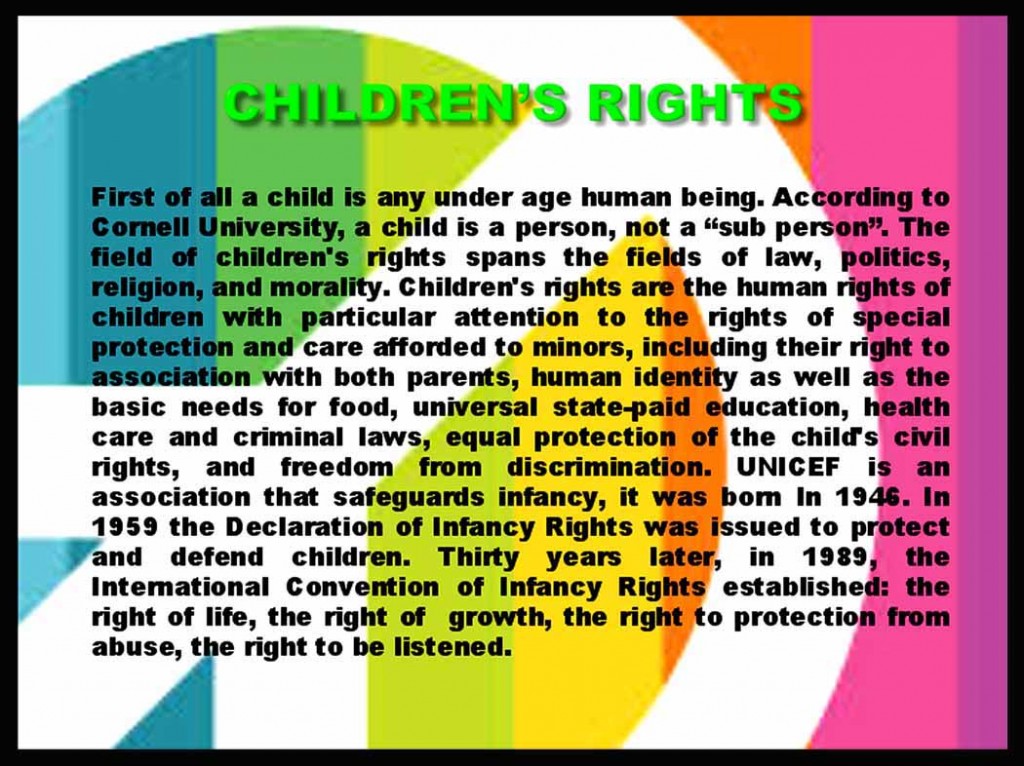 Roberta Miscia’s Students’ Work
Roberta Miscia’s Students’ Work
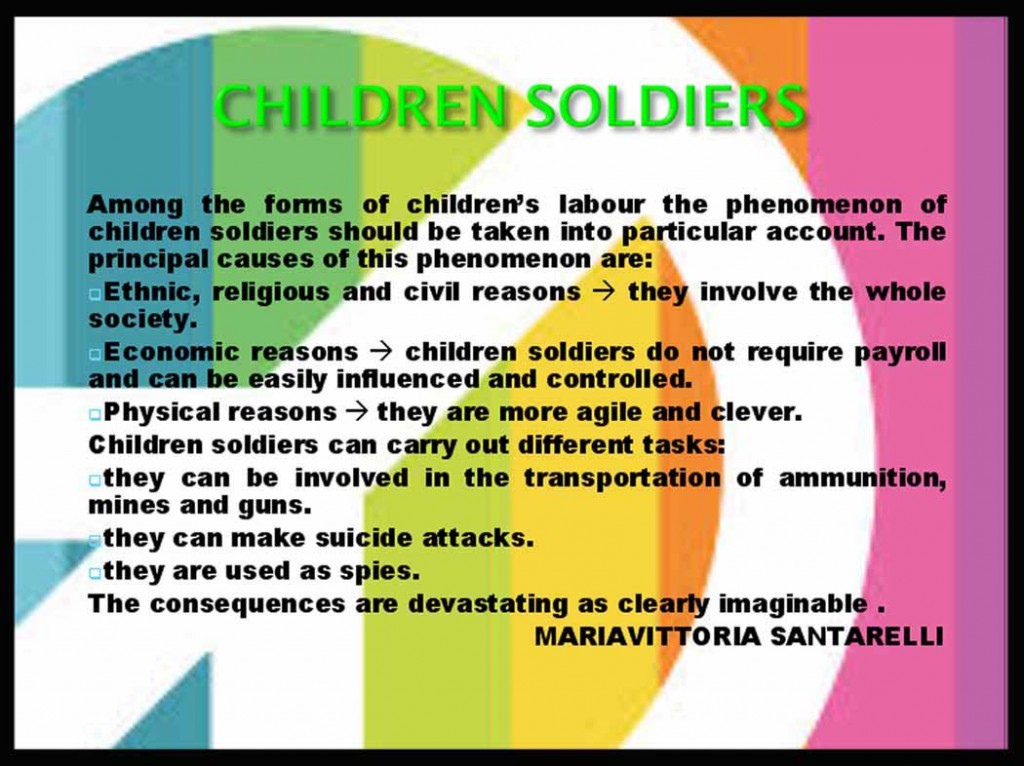 Roberta Miscia’s Students’ Work
Roberta Miscia’s Students’ Work
My Future Is Gone
The roses I love
Are no longer pretty
The Jasmine fragrance
No longer my favorite scent
My heart is aching
Seeing little hands
Holding guns
Someone gave guns to children
And said
Now you have power in your hands
They will do whatever you command
Go!!!
Kill the enemy!!!
You will be rewarded
With food and processions
That you never had
Go!!!!!
Kill yourself with the others!!!
And you will be rewarded
Evermore
Brainwash children
Using certain beliefs
To gain power over children
Power that translates
Into wealth and processions
For the brain-washers
Please let little hands
Hold pens
And educate children
To be better
To not be monsters
Becoming killing machines
Children die
Brain-washers live
More children die
Brain-washers still live
How many more children
Have to die?
To satisfy the brain-washers
Are children our future?
What is the future?
Our future is gone
How can I enjoy the beauty of roses?
How can I smell the jasmine fragrance?
When my future is gone
Ing-On Vibulbhan-Watts, Saturday, February 21, 2015
Military use of children
https://en.wikipedia.org/wiki/Military_use_of_children
The military use of children takes three distinct forms: children can take direct part in hostilities (child soldiers), or they can be used in support roles such as porters, spies, messengers, lookouts; or they can be used for political advantage either as human shields or in propaganda.
Throughout history and in many cultures, children have been extensively involved in military campaigns even when such practices were against cultural morals.[1] In WW1, in Great Britain 250,000 boys under 19 managed to join the army.[2] In WW2, child soldiers fought throughout Eastern Europe, in the Warsaw Uprising,[3] in the Jewish resistance,[4] and in the Soviet Army.[5] Since the 1970s, a number of international conventions have come into effect that try to limit the participation of children in armed conflicts, nevertheless the Coalition to Stop the Use of Child Soldiers reports that the use of children in military forces, and the active participation of children in armed conflicts is widespread.
According to Wessels (1997), “The use of children in armed conflict is global in scope—a far greater problem than suggested by the scant attention it has received. Child soldiers are found from Central America to the Great Lakes region of Central Africa, and from Belfast in the north to Angola in the south” ( p. 2). Children are easy targets to recruit for military purposes because of their vulnerability to influence. Many are seized and recruited by force whereas others join to escape their reality and circumstances.[1]
International law
In 1989, the United Nations Convention on the Rights of the Child, Article 38, proclaimed: “State parties shall take all feasible measures to ensure that persons who have not attained the age of 15 years do not take a direct part in hostilities.” However, people who are over the age of 15 but under the age of 18 are still voluntarily able to take part in combat as soldiers. The Optional protocol on the involvement of children in armed conflict to the Convention that came into force in 2002 stipulates that its State Parties – “shall take all feasible measures to ensure that persons below the age of 18 do not take a direct part in hostilities and that they are not compulsorily recruited into their armed forces”.[6] The Optional Protocol further obligates states to “take all feasible measures to prevent such recruitment and use, including the adoption of legal measures necessary to prohibit and criminalize such practices.” (Art 4, Optional Protocol.)[7] Likewise, under the Optional Protocol states are required to demobilize children within their jurisdiction who have been recruited or used in hostilities, and to provide assistance for their physical and psychological recovery and social reintegration. (Art 6(3) Optional Protocol.)[7]
Under war, civil unrest, armed conflict and other emergency situations, children and youths are also offered protection under the United Nations Declaration on the Protection of Women and Children in Emergency and Armed Conflict.
Under Article 8(2)(b)(xxvi) of the Rome Statute of the International Criminal Court (ICC), adopted in July 1998 and entered into force 1 July 2002; “Conscripting or enlisting children under the age of fifteen years into the national armed forces or using them to participate actively in hostilities” is a war crime.[8]
United Nations
The United Nations Security Council convenes regularly to debate, receive reports, and pass resolutions under the heading “Children in armed conflict”. The most recent meeting was on 17 July 2008.[9] The first resolution on the issue, Resolution 1261, was passed in 1999 (it did not contain references to any earlier resolutions).[10]
In a resolution in 2005[11] the Security Council requested that the action plan[12][13] for establishing a monitoring, reporting and compliance mechanism produced by the Secretary-General be implemented without delay.
International humanitarian law
According to Article 77.2 of the Additional Protocol I to the Geneva Conventions of 12 August 1949, and relating to the Protection of Victims of International Armed Conflicts, adopted in 1977:
The Parties to the conflict shall take all feasible measures in order that children who have not attained the age of fifteen years do not take a direct part in hostilities and, in particular, they shall refrain from recruiting them into their armed forces. In recruiting among those persons who have attained the age of fifteen years but who have not attained the age of eighteen years, the Parties to the conflict shall endeavour to give priority to those who are oldest.
As the ICRC commentary on Protocol it makes clear, this is not a complete ban on the use of children in conflict. The ICRC had suggested that the Parties to the conflict should “take all necessary measures”, which became in the final text, “take all feasible measures” which is not a total prohibition on their doing so because feasible should be understood as meaning “capable of being done, accomplished or carried out, possible or practicable”. Refraining from recruiting children under fifteen does not exclude children who volunteer for armed service. During the negotiations over the clause “take a part in hostilities” the word “direct” was added to it, this opens up the possibility that child volunteers could be involved indirectly in hostilities, gathering and transmitting military information, helping in the transportation of arms and munitions, provision of supplies etc.[14]
Article 4.3.c of Protocol II, additional to the Geneva Conventions of 12 August 1949, and relating to the Protection of Victims of Non-International Armed Conflicts, adopted in 1977, states “children who have not attained the age of fifteen years shall neither be recruited in the armed forces or groups nor allowed to take part in hostilities”.
Under the Optional Protocol to the Convention on the Rights of the Child on the involvement of children in armed conflict, which was adopted and signed in 2002, National armed forces can accept volunteers into their armed forces below the age of 18, but “States Parties shall take all feasible measures to ensure that members of their armed forces who have not attained the age of 18 years do not take a direct part in hostilities”.[15] Non-state actors and guerrilla forces are forbidden from recruiting anyone under the age of 18 for any purpose.
International labor law
Forced or compulsory recruitment of anyone under the age of 18 for use in armed conflict, is one of the predefined worst forms of child labour, deemed a form of slavery, in terms of the International Labour Organisation’s Worst Forms of Child Labour Convention, 1999, adopted in 1999.
In terms of the Worst Forms of Child Labour Recommendation ratifying countries should ensure that forced or compulsory recruitment of children for use in armed conflict is a criminal offence, and also provide for other criminal, civil or administrative remedies to ensure the effective enforcement of such national legislation III(12) to (14).
War crimes
Opinion is currently divided over whether children should be prosecuted for committing war crimes.[16]
International law does not prohibit the prosecution of children who commit war crimes, but the article 37 of the United Nations Convention on the Rights of the Child does limit the punishment that a child can receive including “Neither capital punishment nor life imprisonment without possibility of release shall be imposed for offences committed by persons below eighteen years of age.”[16]
Many child soldiers fought in the Sierra Leone Civil War. In its wake, the UN sanctioned the Special Court for Sierra Leone (SCSL) to try the participants for war crimes and other breaches of humanitarian law. The statute of the SCSL gave the court jurisdiction over persons aged 15 and older, however the Paris Principles state that children who participated in armed conflict:
… who are accused of crimes under international law allegedly committed while they were associated with armed forces or armed groups should be considered primarily as victims of offences against international law; not only as perpetrators. They must be treated in accordance with international law in a framework of restorative justice and social rehabilitation, consistent with international law which offers children special protection through numerous agreements and principles.[17]
and this was reflected in the wording of article 7 of the SCSL statute which did not rule out prosecution but emphasised rehabilitation and society’s reintegration. David Crane the first Chief Prosecutor of the Sierra Leone tribunal, chose to interpret the statute so that the tribunal’s policy was to prosecute those who recruited the children rather than the children themselves no matter how heinous the crimes they had committed.[16]
In the United States, prosecutors take a different view from David Crane and have repeatedly stated that they intend to try Omar Khadr, on several serious charges including murder, for offences they allege he committed in Afghanistan while fighting for the Taliban against United States forces while he was under sixteen years old. If found guilty under US law such a crime carries a maximum penalty of life imprisonment.[16] On 25 October 2010, Khadr pleaded guilty to murder in violation of the laws of war, attempted murder in violation of the laws of war, conspiracy, two counts of providing material support for terrorism and spying.[18][19] This was agreed as part of a plea bargain, which would see Khadr deported to Canada after one year to serve the remaining seven years there.[20] In a letter to the U.S. military commission at Guantanamo after the plea of guilty had been heard but before the announcement of sentence, Radhika Coomaraswamy, the UN secretary-general’s special representative for children and armed conflict, wrote that Khadr represents the “classic child soldier narrative: recruited by unscrupulous groups to undertake actions at the bidding of adults to fight battles they barely understand”, and suggested that Khadr to be released into a rehabilitation program.[21] Omar Khadr remained in Guantanamo Bay as of July 2012, and the Canadian government continued to face international criticism for their stonewalling of his repatriation.[22]
In March 2012 Thomas Lubanga Dyilo was convicted by the International Criminal Court for military use of children.[23]
Nations and groups involved in military use of children
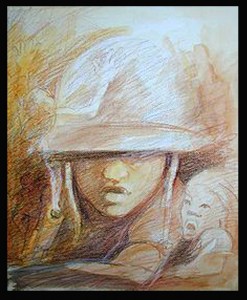 “Child Soldier in the Ivory Coast“, Gilbert G. Groud, 2007.
“Child Soldier in the Ivory Coast“, Gilbert G. Groud, 2007.
P. W. Singer of the Brookings Institution estimated in January 2003 that child soldiers participate in about three quarters of all the ongoing conflicts in the world.[24] According to the website of Human Rights Watch as of July 2007:
| “ | In over twenty countries around the world, children are direct participants in war. Denied a childhood and often subjected to horrific violence, an estimated 200,000 to 300,000 children are serving as soldiers for both rebel groups and government forces in current armed conflicts.[25] |
” |
Under the terms of Protocol I of the Geneva Conventions, children over the age of fifteen who have volunteered can be used as spotters, observers, and message-carriers (see above International humanitarian law). The UN Office for the Coordination of Humanitarian Affairs (UNOCHA) has stated that most children serving as soldiers are over fifteen, although many exist at far younger ages.[26]
Africa
Main article: Child soldiers in Africa
Children of the Omo Valley in Ethiopia.
The Cape Town Principles and Best Practices, adopted by the NGO Working Group on the Convention on the Rights of Children and UNICEF at a symposium on the prevention of recruitment of children into the armed forces and on demobilization and social regeneration of child soldiers in Africa in April 1997, proposed that African Governments should adopt and ratify the Optional protocol on the involvement of children in armed conflict raising the minimum age from 15 to 18, and that African Governments should ratify and implement other pertinent treaties and incorporate them into national law. The symposium defines a child soldier as any person under age 18 who is “part of any kind of regular or irregular armed force or group in any capacity, including but not limited to cooks, porters, messengers and those accompanying such groups, other than purely as family members. The definition includes girls recruited for sexual purposes and for forced marriage. It does not, therefore, only refer to a child who is carrying or has carried arms.”[27]
Up to half of the world’s child soldiers are in Africa according to UNOCHA.[26] In 2004 one estimate put the number of children involved in armed conflict including combat roles at 100,000.[28] In the end titles of the film Blood Diamond, it is claimed that “there are still 200,000 child soldiers in Africa”. Many of these children are “invisible children,” orphaned by AIDS, violence and war. These children are as young as 7 years old and are forced into conflict due to poverty, sold by their parents, kidnapped, or tricked into joining. Organizations like Invisible Children and films like Invisible Children: Rough Cut help to bring to light the use of child soldiers; Actress Kristen Bell has also been fighting for saving child soldiers through Invisible Children since its founding in 2004.
Burundi
In 2004 hundreds of child soldiers served in the Forces Nationales pour la Libération (FNL), an armed rebel Hutu group. Children between the ages of 10 and 16 were also conscripted by the Burundese military.[28]
Central African Republic
Between 2001 and 2003, children served in armed rebel groups, including the Union of Democratic Forces for Unity (Union des Forces Démocratiques pour le Rassemblement, UFDR).[29]
Chad
Child soldiers are fighting with the Chadian Military, integrated rebel forces – the United Front for Democratic Change (Front Uni pour le Changement, FUC), local self-defense forces known as Tora Boro militias, and two Sudanese rebel movements operating in Chad – the Justice and Equality Movement (JEM) and the G-19 faction of the Sudanese Liberation Army (SLA).[30][31]
Cote d’Ivoire
During the 2002 civil war, “children were recruited, often forcibly, by both sides.”[29]
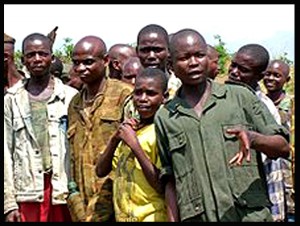 A group of demobilized child soldiers in the Democratic Republic of the Congo
A group of demobilized child soldiers in the Democratic Republic of the Congo
Democratic Republic of Congo
Main article: Child soldiers in the Democratic Republic of Congo
Thousands of children serve in the military, as well as the various rebel militias. At the height of the Second Congo War, it has been estimated that more than 30,000 children were fighting with various parties to the conflict. It was claimed that the Lord’s Resistance Army recruited this number in the film Kony 2012.[32]
Nowadays the Democratic Republic of Congo has one of the highest rates of child soldiers all over the world. The international court has taken part on the judgment of these practices during the war. Thomas Lubanga Dyilo, one of the warlords in the DRC has been charged with 14 years in prison because of the recruiting of child soldiers between 2002 and 2003.[33] Lubanga directed the Union of Congolese Patriots and its armed wing Patriotic Forces for the Liberation of Congo. The children were forced to fight in the armed conflict of Ituri, located on the north-east of the country, a place with a high amount of mineral resources. This trial is the first of this kind and could set precedent legislation against these violations of human rights.[citation needed]
Rwanda
In 2002, child soldiers were used by Rwandan government forces and paramilitaries, operating within the Democratic Republic of Congo.[28]
Sierra Leone
In Armies of the Young: Child Soldiers in War and Terrorism anthropologist David M. Rosen discusses the murders, rapes, tortures, and the thousands of amputations committed by the Small Boys Unit of the Revolutionary United Front (RUF) during Sierra Leone’s civil war (1991–2001.)[34] Another book describing the civil war is A Long Way Gone by Ishmael Beah. It describes the civil war from the view of Ishmael when he was forced to be a soldier. In popular culture, movies like “Blood Diamond” are set at the backdrop of the Civil War in Sierra Leone.
Somalia
A report published by Coalition to Stop the Use of Child Soldiers in 2004 estimated that since 1991, 200,000 children carried arms or had been recruited in the country’s militias against their will.[29]
South Africa
During the Second Boer War (1899-1902) children were used both as scouts and as despatch carriers by the British to move through the lines of Boer fighters besieging the town of Mafikeng. This gave rise to the establishment of the Scout movement by Robert Baden-Powell, a lieutenant general in the British Army, in 1907.[citation needed]
Sudan
A child soldier of the Sudanese People’s Liberation Army (2007).
“In March 2004, there were an estimated 17,000 children in government forces, allied militias and opposition armed groups in the north, east and south. Between 2,500 and 5,000 children served in the armed opposition group, the Sudan People’s Liberation Army (SPLA), in the south. Despite a widely publicized child demobilization program, in which it claimed to have demobilized over 16,000 children between 2001 and 2004, the SPLA continued to recruit and re-recruit child soldiers.”[28] In 2003 it was reported that armed groups were active in government armed forces, Janjaweed militias, and opposition groups.[28] Former child soldiers were sentenced to death for crimes committed while they were soldiers.[29]
Uganda
Over the past twenty years, the rebel Lord’s Resistance Army has abducted more than 30,000 boys and girls as soldiers. Attacks against Uganda’s Acholi people have resulted in severe trauma to civilians from extreme violence and abduction. Girls are often forced to be sex slaves.[35] The Uganda People’s Defence Force has recruited small numbers of children into its forces as young as 13, including Local Defense Units.[citation needed] In 22 April 2004, resolution 1539 was put in place by the United Nations Security Council
When discussing children in armed conflict there is much information to call upon. Nicola Ansell who wrote “Children, Youth and Development” is the source for my information on children in armed conflict. Ansell explains that each child is affected in different ways, often worse than what adults experience. Traditionally societies have aimed to protect the child in war. In Uganda, the Acholi people would avoid attacking children in order to facilitate post-conflict reconciliation.[36] According to the international law special treatment is given to children who are under 15 years of age; these children should not be illogically killed, maimed or tortured. Children within these criteria should be given food and shelter and allowed to remain with their families if possible. There are cases when these children are intentionally targeted, used as human shields, or killed by terrorists.[37] Roughly 90% of the victims of war are civilians, estimating half to be children.
Children in war are often victim to accidental injury or untimely deaths as a result of their curiosity, land mines are an example of this, they are designed to injure adults but in fact they are the cause of death of roughly 10,000 children per year. However, the deaths usually occur long after the war is over. Children are not the target during a conflict, and if they are injured it usually by accident, most children are “secondary victims” or “observers” subjected to damage of family property or death/injury to their kin leaving them orphans. Roughly 1 million children have become orphans as a result from armed conflict leaving the internally displaced persons (IDP) or refugees overcrowded, unhygienic subjecting the children to disease.[38]
Zimbabwe
The ZANU-PF government of Robert Mugabe sponsors a “youth militia”—the National Youth Service, members aged between 10–30 are known as the “Green Bombers”.[citation needed]
Asia and Oceania
Photos of young Khmer Rouge fighters
In 2004, the Coalition to Stop the Use of Child Soldiers (CSUCS) reported that in Asia thousands of children are involved in fighting forces in active conflict and ceasefire situations in Afghanistan, Burma, Indonesia, Laos, Philippines, Nepal and Sri Lanka, although government refusal of access to conflict zones has made it impossible to document the numbers involved.[39] In 2004, Burma was unique in the region as the only country where government armed forces forcibly recruit and use children between the ages of 12 and 16.[39] Johnny and Luther Htoo, twin brothers who jointly led the God’s Army guerrilla group, were estimated to have been around ten years old when they began leading the group in 1997.[citation needed]
Australia
The Australian Defence Force allows personnel to enlist with parental consent from the age of 17. However, personnel under the age of 18 cannot be deployed overseas or used in direct combat except in extreme circumstances where it is not possible to evacuate them.[40]
Afghanistan
Militias recruited thousands of child soldiers during the Afghan civil war during three decades. Many would still be fighting now, for the Taliban. Some of those taken from Islamic religious schools, or madrassas, are used as suicide bombers and gunmen. A propaganda video of boys marching in camouflage uniform and using slogans of martyrdom was issued in 2009 by the Afghan Taliban’s leadership in Pakistan, the Quetta Shura, including a eulogy to a 14-year-old Taliban fighter who allegedly killed an American soldier.[41]
Bahrain
Military cadets, NCO trainees and technical personnel can enlist in the Bahrain Defence Force from the age of 15.[42]
Burma/Myanmar
State Peace and Development Council has stated that controls the government has stated that all of its soldiers volunteered and that all of those accepted are 18 or over. According to Human Rights Watch, as many as 70,000 boys serve in Burma/Myanmar’s national army, the Tatmadaw, with children as young as 11 forcibly recruited off the streets. Desertion, the group reported, leads to punishment by three to five years in prison or even execution in some cases. The group has also stated that about 5,000–7,000 children serve with a range of different armed ethnic opposition groups, most notably in the United Wa State Army.[43] U.N. Secretary General Ban Ki-moon released a report in June 2009 mentioning “grave violations” against children in the country by both the rebels and the government. The administration announced on 4 August that they would send a team into Burma/Myanmar to press for more action.[44]
India
In India, volunteers can join the Navy from the age of 16 1/2 and the Air Force from the age of 17. These soldiers are not deployed until after training by which time they are 18 years or older.[45]
Iran
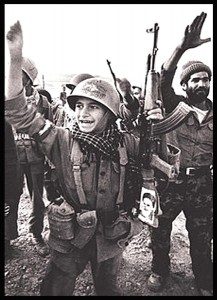 Iranian child soldier during the Iran-Iraq war
Iranian child soldier during the Iran-Iraq war
Iranian law prohibits the recruitment of those under 16, basing itself on the Koranic traditions about war. However, the state broke those rules by the middle of the Iran-Iraq War. As nationalism and anger to the Iraqi invasion spread, some children (along with old men) volunteered for the Basij militia, often from areas destroyed by the Iraqi invasion. All were volunteers, often more passionate about their cause than their adult counterparts, and were mostly over 13 years of age. In 1984, Iranian president Ali-Akbar Rafsanjani said, “all Iranians from 12 to 72 should volunteer for the Holy War.”[46] Young volunteers’ participating in war was heavily utilized by Western media for Anti-Iranian propaganda, and among most popular stories was alleged “distribution of plastic keys to paradise.” Most of such stories were really myths, propaganda, or embellished stories, and the child soldiers simply fought alongside their adult counterparts, often in Basij RPG or mine clearing teams. A small number of schoolchildren currently serve in the ranks of the Basij, an Iranian paramilitary force, according to CSUCS, generally above the age of 16. They have reported that the state conscripts for the regular army at age 19- while accepting volunteers at age 16- and those at 17 can work for the police.[47]
Iraq
Saddam Hussein‘s regime maintained ‘boot camps‘ of civilian youths between the ages of 12 and 17 that involved small arms training and Ba’athist political indoctrination according to the CSUCS. Iraqi opposition sources and the U.S. State Department reported that children who refused faced punishment. As well, the state incorporated children as young as ten into the Futuwah and Ashbal Saddam youth movements and then subjected them to military training, sometimes for 14 hours a day.[48] P. W. Singer has compared the groups to the Hitler Jugend.[24] In the Gulf War, 12-year-old boys fought for the Iraqi side with Kalashnikovs. Children also participated in the Iran-Iraq War.[48]
American forces fought children at Nasariya, Karbala, and Kirkuk in the 2003 invasion of Iraq.[46] A January 2009 UN report on the post-war Iraqi occupation stated that the Iraqi insurgency has used children as combatants. The report noted, for example, a suicide bombing attack by a boy between 10 and 13 years old against Kirkuk‘s police commander. CNN.com called the findings “disturbing”.[49] Coalition forces have been forced to take child insurgents as captives, which has led to a moral dilemma. The U.S. has shipped many of them into Abu Ghraib prison.[46]
Kurdistan
The Kurdish Workers Party (PKK) systemically recruits children as young as 7 according to the CSUCS. They have reported that the PKK even formed a battalion specially for this purpose, called Tabura Zaroken Sehit Agit. They counted the number of child soldiers at 3,000 in 1998. The Patriotic Union of Kurdistan (PUK) also recruits children according to the CSUCS.[48]
Lebanon
Many different sides in the Lebanese Civil War used child soldiers. The practice essentially ended after the peace from 1990 onwards, but factions have made allegations against each other about it since then.[50] A May 2008 CSUCS report stated that Hezbollah trains children for military services.[47] In April 2009, UN Secretary General Ban Ki-moon accused several factions of the practice. However, a Human Rights Watch representative told The Daily Star that they have not documented any systemic military use of children by anyone.[50]
Nepal
An estimated 6,000–9,000 children serve in the Communist Party of Nepal (Maoist) forces. Although a peace agreement is in place, the Maoists have not yet demobilized children from their ranks.[51]
The Philippines
Children are recruited by rebel forces, including the New People’s Army, Abu Sayyaf Group, and the Moro National Liberation Front. An estimated 13 percent of the 10,000 soldiers in the Moro National Liberation Front (MNLF) are children. Child recruitment is also reported by some paramilitary forces linked to the government.[52] There is a United Nations Security Council Report in 23 April 2010 that says that the Moro National Liberation Front (MNLF), Abu Sayyaf Group (ASG), New People’s Army (NPA), and the Armed Forces of the Philippines (AFP) are among the groups around the world that have subjected minors to the most brutal violence, such as killings, maimings, rapes and other sexual assaults.[citation needed]
Singapore
A mandatory National Service (NS) requires all male Singaporean citizens and second-generation permanent residents who have reached the age of 18 to enroll in the military. They serve a two-year or one-year-ten-month period as Full Time National Servicemen (NSFs), either in the Singapore Armed Forces (SAF), Singapore Police Force (SPF), or the Singapore Civil Defence Force (SCDF). Pre-enlistees are subjected to exit control measures policy of limiting the passport validity of boys aged 11 and above, up to their enlistment. To travel, the boys had to apply to extend for 9 months extensions of the validity of their passports. This policy is, however, done away with recently due to the limitation of the new biometric passport. Exit permits are still required for overseas trips which last longer than three months. The stated objective of such exit control measures is to deter NS-evasion, and to act as a “psychological reminder” of the NS obligations.[citation needed]
Sri Lanka
Main article: Military use of children in Sri Lanka
In Sri Lanka, thousands of children were believed to be in the ranks of the Liberation Tigers of Tamil Eelam (LTTE),[53] a rebel group banned as a terrorist organization by a number of countries. Since signing a ceasefire agreement in 2001, the latest available UNICEF figures show that the LTTE has abducted 5,666 children until July 2006, although the organization speculates that only about a third of such cases are reported to them. Sri Lankan soldiers nicknamed one unit the Baby Battalion, due to the number of children in it.[54] In response to widespread international condemnation of alleged children recruitment practices, the LTTE informed that they have made (taking effect in Oct. 2006) child recruitment illegal for its groups.[53] After the end of the Sri Lankan Civil war child soldiers are being rehabilitated by the government with aid from UN and International groups.
More recently, the para-military group known as the Karuna Group, which is apparently a splinter group from the LTTE, has been held responsible for the abduction of children according to UNICEF and Human Rights Watch.[55]
Syria
During the ongoing Syrian Civil War, children have joined the opposition against Bashar al Assad; Human Rights Watch reported in 2014 that rebel factions have been using child soldiers in roles ranging from sniper to suicide bomber.[56]
Assad passed a law in 2013 prohibiting the use of child soldiers (anyone under 18), the breaking of which is punishable by 10–20 years of ‘penal labor’.[57] However, whether or not the law is strictly enforced has not been confirmed, and there have been reports[58] of children being recruited to fight for the Assad government against rebel forces such as the Free Syrian Army.
Israel and the Palestinian Territories
Main article: Child suicide bombers in the Israeli–Palestinian conflict
Jihad Shomaly, in a report entitled Use of Children in the Occupied Palestinian Territories, published in 2004 for the Defence for Children International/Palestine Section, concludes the report by stating that a handful of children perceive martyrdom a way to strike a blow against those they hold responsible for their hopeless situation, and that they have been recruited by Palestinian paramilitary groups to carry out armed attacks. However, Shomaly goes onto state that there is no systematic recruitment and that senior representatives of the groups and the Palestinian community are against the recruitment of children as a political strategy, although in Shomaly’s opinion the political leadership of the Palestinians could do more to discourage the use of children by paramilitaries by requesting that the leadership of the paramilitaries sign a memorandum forbidding the training and recruitment of children. Hamas, a terrorist organization with the goal of eliminating all Jews, sometimes make children soldiers inciting them to hate Israel asking them to avenge their dead compatriots or members of their families.
William O’Brien, a professor of Georgetown University, wrote about active participation of Palestinian children in the First Intifada: “It appears that a substantial number, if not the majority, of troops of the intifada are young people, including elementary schoolchildren. They are engaged in throwing stones and Molotov cocktails and other forms of violence.”[59] Arab journalist Huda Al-Hussein wrote in a London Arab newspaper on 27 October 2000: “While UN organizations save child-soldiers, especially in Africa, from the control of militia leaders who hurl them into the furnace of gang-fighting, some Palestinian leaders… consciously issue orders with the purpose of ending their childhood, even if it means their last breath.”[60]
In 2002, the Coalition to Stop the Use of Child Soldiers said “while there are reports of children participating in hostilities, there is no evidence of systematic recruitment by armed groups [in the Occupied Territories]”,[61] with less than 1% of Palestinian adolescents having played an active role in clashes with Israeli troops.[62] According to the CSUCS 2004 Global Report on the Use of Child Soldiers, there were at least nine documented suicide attacks involving Palestinian minors between October 2000 and March 2004:[63] but also stated, “There was no evidence of systematic recruitment of children by Palestinian armed groups. However, children are used as messengers and couriers, and in some cases as fighters and suicide bombers in attacks on Israeli soldiers and civilians. All the main political groups involve children in this way, including Fatah, Hamas, Islamic Jihad, and the Popular Front for the Liberation of Palestine.”[64] In May 2008, a CSUCS report highlighted Hamas and Islamic Jihad for having “used children in military attacks and training” in its Iranian section.[47]
On 23 May 2005, Amnesty International reiterated its calls to Palestinian armed groups to put an immediate end to the use of children in armed activities: “Palestinian armed groups must not use children under any circumstances to carry out armed attacks or to transport weapons or other material.”[65]
In October 2010 an Israeli military tribunal convicted two Israel Defense Forces soldiers of using an 11-year-old Palestinian child as a human shield during Operation Cast Lead, by forcing him to search bags in his house for explosive devices.[66]
Mandatory Palestine
Historically, In Armies of the Young: Child Soldiers in War and Terrorism anthropologist David M. Rosen discusses the creation of troops of boys aged twelve and up, modelled on the Hitler Youth, and armed by the Arab Nazi party in Palestine and that carried out military attacks as part of the 1936–1939 Arab revolt in Palestine.[67] Yassir Arafat grew up in this era and later claimed to be both a child soldier and an organizer of other youth, emerging as a militant political leader by age ten. However, there are few reliable historical records supporting this.[68] During the same period, very young children of Zionist settlers were allowed to take part in military activities in the same area, committing numerous hostilities both against Palestinians and against the British authorities.[citation needed]
Yemen
U.N. Special Representative for Children and Armed Conflict Radhika Coomaraswamy stated in January 2010 that “large numbers” of teenage boys are being recruited in tribal Yemeni fighting. NGO activist Abdul-Rahman al-Marwani has estimated that as many as 500–600 children are either killed or wounded through tribal combat every year in Yemen.[69]
Europe
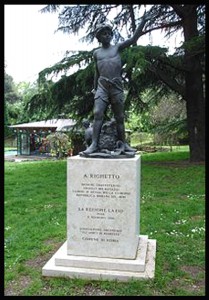 The brave Righetto (1851). Replica of the Giovanni Strazza (it) statue in the lobby of the grand staircase in Palazzo Litta. It portrays a 12 years child who died with his dog in 1849 while trying to stop a bomb during the defense of the Repubblica Romana in 1849.
The brave Righetto (1851). Replica of the Giovanni Strazza (it) statue in the lobby of the grand staircase in Palazzo Litta. It portrays a 12 years child who died with his dog in 1849 while trying to stop a bomb during the defense of the Repubblica Romana in 1849.
Chechnya
According to the UN report, the Chechen separatist forces included a large number of children, some as young as 11 and both male and female, during the First Chechen War: “Child soldiers in Chechnya were reportedly assigned the same tasks as adult combatants, and served on the front lines soon after joining the armed forces.”[70] In 2004 the Coalition to Stop the Use of Child Soldiers reported that in Chechnya, under-18s are believed to be involved in a range of armed groups in the war against Russia, although the numbers are impossible to establish given a virtual ban on media and human rights organizations from operating in the region. Some children allegedly took part in suicide bombings.[71]
Greece
Greece allows for the wartime recruitment of teenagers aged 17, if their 18th birthday falls within the same calendar year.[72]
Ireland
The minimum age to join the Irish Defence Forces is 17, but Ireland allows for the recruitment of 16-year-olds to apprentice specialist positions.[73]
Norway
Norway allows for the wartime recruitment of teenagers aged 16.[74]
United Kingdom
The minimum age to join the British Armed Forces is 16; parental permission is required for those under the age of 18. Approximately one fifth of new recruits are 16 or 17 years of age. The UK adopted the Optional Protocol to the Convention on the Rights of the Child, on the involvement of children in armed conflict on 24 June 2003. The Convention calls on ratifying governments to do everything feasible to ensure that members of their armed forces who are under 18 years of age do not take part in hostilities, however between June 2003 and July 2005, the British government inadvertently sent fifteen 17-year-old soldiers to Iraq, explaining the mistake as due to “the pressures on units prior to deployment”.[75]
Serbia,Bosnia and Herzegovina,Kosovo
In 1992–1995, Serb militias fighting in Bosnia and Croatia used children as young as ten, as did the Bosnian Muslim regular armies.[76][77] In the Kosovo War, the ethnic-Albanian militant organization known as the Kosovo Liberation Army (KLA) used child soldiers, with 10% of their fighters being underage.[78]
North America
Canada
In Canada, people may join the reserve component of the Canadian Forces at age 16 with parental permission, and the regular component at 17 years of age, also with parental permission. They may not volunteer for a tour of duty until reaching age 18.[79]
United States
In the United States 17-year-olds may join the armed forces, but may not be stationed outside the continental US or deployed in combat situations. The United States military is based on voluntary recruitment, though minors also must have parental permission to enlist (or permission from a legal guardian in the absence of parents) unless emancipated as adults in which case no consent other than the individual wishing to enlist is required. Males under eighteen years of age are not draft eligible, and females are not eligible for conscription at any age. The United States military requires all soldiers to possess a high school diploma or equivalent prior to attending initial entry training; this requirement may be waived for young soldiers for up to 180 days from the date of enlistment (with the agreement that the child obtains a high school diploma or equivalent within 180 days) during wartime.[citation needed]
In 2004 the Director of Military Personnel Policy for the US Army acknowledged in a letter to Human Rights Watch that nearly 60 17-year old US soldiers had been deployed to Iraq and Afghanistan in 2003 and 2004.[80] The Department of Defense subsequently stated that “the situations were immediately rectified and action taken to prevent recurrence”.[81]
On 3 October 2008, President George W. Bush signed the Child Soldiers Protection Act (CSPA) federal statute into law.[82][83] The law criminalizes leading a military force which recruits child soldiers. The law’s definition of child soldiers includes “any person under 18 years of age who takes a direct part in hostilities as a member of governmental armed forces.”
President Barack Obama announced he was waiving the Child Soldiers Protection Act ban on aid to nations that use child soldiers.[84]
Latin America
Central America
El Salvador
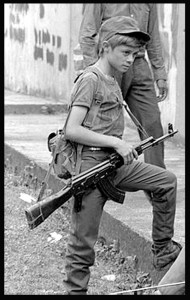 Rebel Salvadoran soldier boy combatant in Perquin, El Salvador 1990, during the Salvadoran Civil War.
Rebel Salvadoran soldier boy combatant in Perquin, El Salvador 1990, during the Salvadoran Civil War.
During the Salvadoran Civil War, both the military and the guerillas recruited and kidnapped children and trained them to be child soldiers. The crimes make El Salvador the second Latin American country proven to engage in such child abductions during internal Cold War-era conflicts. No one has revealed the full scope of the child abductions in El Salvador. The number of confirmed abductions will likely rise if the country’s Defense Department makes public files from the civil war saga era. These former Salvadoran child soldiers were the principal founders of the Maras (gangs) that formed in Los Angeles, which today torment the Central American isthmus and most of the North America continent.
South America
Bolivia
The government of Bolivia has acknowledged that children as young as 14 may have been forcibly conscripted into the armed forces during recruitment sweeps.[85] About 40% of the Bolivian army is believed to be under the age of 18, with half of those below the age of 16.[85]
Colombia
In 2005, an estimated 11,000 children were involved with left-wing guerrillas or right-wing paramilitaries in Colombia according to Human Rights Watch and “[a]pproximately 80 percent of child combatants in Colombia belong to one of the two left-wing guerrilla groups, the FARC or ELN. The remainder fights in paramilitary ranks.”[86] According to P. W. Singer, the FARC attack upon the Guatape hydroelectric facility in 1998 had allegedly involved militants as young as 8 years old and a 2001 FARC training video depicted boys as young as 11 working with missiles. The group has also taken in children from Venezuela, Panama, and Ecuador.[46]
In 1998, a Human Rights Watch press release indicated that 30 percent of some guerrilla units were made up of children and up to 85 percent of some of the militias, which are considered to serve as a “training ground for future guerrilla fighters.”[87] In the same press release, Human Rights Watch also estimated that some of the government-linked paramilitary units contained up to 50 percent children, including some as young as 8 years old.[46][87]
In 2008, the Coalition to Stop the Use of Child Soldiers reported that the Colombian government’s security forces did not officially recruit children. The legal age for both compulsory and voluntary recruitment has been set at 18. However, students were allowed to enroll as cadets in military secondary schools and 16 or 17-year olds could enter air force or national army training programs, respectively. In addition, captured enemy child combatants were employed by the Colombian military for intelligence gathering purposes in potential violation of legal prohibitions.[88]
Caribbean
Cuba
In Cuba, compulsory military service for both boys and girls starts at age 17;[89] male teenagers are allowed to join the Territorial Troops Militia prior to their compulsory service.
Haiti
In Haiti an unknown number of children participate in various loosely-organized armed groups that are engaged in political violence.[90]
Movement to stop military use of children
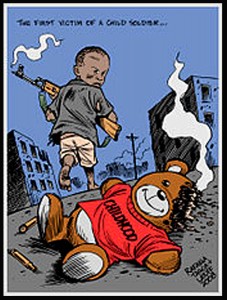 2008 poster by Rafaela Tasca and Carlos Latuff
2008 poster by Rafaela Tasca and Carlos Latuff
Red Hand Day on 12 February is an annual commemoration day to draw public attention to the practice of using children as soldiers in wars and armed conflicts.
Recently, a strong international movement has emerged to put an end to the practice. See, for example, Coalition to Stop the Use of Child Soldiers.
History
1800s and earlier
 Left:Mexico honors its cadets who died in the battle of Chapultepec (1847).
Left:Mexico honors its cadets who died in the battle of Chapultepec (1847).
Right:A powder monkey on a Union vessel, American Civil War.
Throughout history and in many cultures, children have been extensively involved in military campaigns.
The earliest mentions of minors being involved in wars come from antiquity. It was customary for youths in the Mediterranean basin to serve as aides, charioteers and armor bearers to adult warriors. Examples of this practice can be found in the Bible (such as David‘s service to King Saul), in Hittite and Egyptian art, and in Greek mythology (such as the story of Hercules and Hylas), philosophy and literature.
Also in a practice dating back to antiquity, children were routinely taken on campaign, together with the rest of a military man’s family, as part of the baggage.
The Romans also made use of youths in war, though it was understood that it was unwise and cruel to use children in war, and Plutarch implies that regulations required youths to be at least sixteen years of age.
In medieval Europe, young boys from about twelve years of age were used as military aides (“squires“), though in theory their role in actual combat was limited. The so-called Children’s Crusade in 1212 recruited thousands of children as untrained soldiers under the assumption that divine power would enable them to conquer the enemy, although none of the children actually entered combat; according to the legend, they were instead sold into slavery. While most scholars no longer believe that the Children’s Crusade consisted solely, or even mostly, of children, it nonetheless exemplifies an era in which the entire family took part in a war effort.
Young boys often took part in battles during early modern warfare. When Napoleon was faced with invasion by a massive Allied force in 1814, he conscripted many teenagers for his armies. Orphans of the Imperial Guard fought in the Netherlands with Marshal MacDonald and aged between 14 and 17.[91] Many of the conscripts who reported to the ranks in 1814 were referred to as Marie Louises after the Empress Marie Louise of France (they were also known as “The Infants of the Emperor). These soldiers were in their mid-teens and performed heroic acts under the personal direction of Napoleon, but could not stem the tide of the Allied advance.[92] One of their more visible roles was as the ubiquitous “drummer boy” – the film Waterloo (based on the Battle of Waterloo) graphically depicts French drummer boys leading Napoleon’s initial attack, only to be gunned down by Allied soldiers.
During the age of sail, young boys formed part of the crew of British Royal Navy ships and were responsible for many important tasks including bringing powder and shot from the ship’s magazine to the gun crews. These children were called “powder monkeys”.
 Drummer boy John Clem during the American Civil War.
Drummer boy John Clem during the American Civil War.
A young boy, Bugler John Cook, served in the U.S. Army at the age of 15 and received the Medal of Honor for his acts during the Civil War Battle of Antietam, the bloodiest day in American history.[93] Several other minors, including 11-year-old Willie Johnston have also received the Medal of Honor.[94]
By a law signed by Nicholas I of Russia in 1827, a disproportionate number of Jewish boys, known as the cantonists, were forced into military training establishments to serve in the army. The 25-year conscription term officially commenced at the age of 18, but boys as young as eight were routinely taken to fulfill the hard quota.[citation needed]
In the final stages of the Paraguayan War, children fought in the Battle of Acosta Ñu against the Allied forces of Brazil, Argentina and Uruguay. The day is remembered as a national holiday in Paraguay.
During the Boshin War, the pro-Shogun, Aizu Domain formed the Byakkotai (????, lit. “White Tiger Force”), which is unit made up of young, 16 to 17-year old sons of Aizu samurai. Along with the Genbutai (????, “Black Tortoise Force”), Seiry?tai (????, “Azure Dragon Force”), and Suzakutai (????, “Vermilion Bird Force”), the unit was supposed to be a reserve unit. During the Battle of Bonari Pass and Battle of Aizu they fought the Satcho forces who supported the Imperial cause. During the battle, a detached unit of Byakottai was cut of from the rest of the unit and retreated at Iimori Hill, which overlooked Aizu-Wakamatsu Castle. From there, they saw what they thought was the castle on fire. 20 of the detached unit commit seppuku while one was unsuccessful. He was saved by a local peasant.
World War I
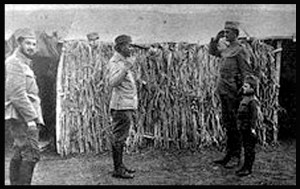 Mom?ilo Gavri? and another soldier reporting to major Stevan Tucovi?, 1916.
Mom?ilo Gavri? and another soldier reporting to major Stevan Tucovi?, 1916.
The youngest known soldier of World War I was Mom?ilo Gavri?, who joined the 6th Artillery Division of the Serbian Army at the age of 8, after Austro-Hungarian troops in August 1914 killed his parents, grandmother, and seven of his siblings.[95][96][97]
In the West, boys as young as 12 were caught up in the overwhelming tide of patriotism and in huge numbers cheerfully enlisted for active service others to avoid the harsh and dreary lives they had working in British industry. Many were to serve in the bloodiest battles of the war, such as ex-miner Dick Trafford who took part in the Battle of Loos, and Frank Lindley who, seeking to avenge his dead brother, went over the top on the first day of the Battle of the Somme. Both were just sixteen. Typically many were able to pass themselves off as older men, such as George Thomas Paget, who at 17 joined a Bantam battalion in the Welsh Regiment. George died of wounds in captivity just five weeks after landing in France. George Mahers who served briefly in France when he was just thirteen years and nine months old. He was sent back to England along with five other under-age boys.
Spanish Civil War
Many child soldiers fought in the Spanish Civil War:
| “ | The centuria was an untrained mob composed mostly of boys in their teens. Here and there in the militia you came across children as young as eleven or twelve, usually refugees from Fascist territory who had been enlisted as militiamen as the easiest way of providing for them. As a rule they were employed on light work in the rear, but sometimes they managed to worm their way to the front line, where they were a public menace. I remember one little brute throwing a hand-grenade into the dug-out fire ‘for a joke’. At Monte Pocero I do not think there was anyone younger than fifteen, but the average age must have been well under twenty. Boys of this age ought never to be used in the front line, because they cannot stand the lack of sleep which is inseparable from trench warfare. At the beginning it was almost impossible to keep our position properly guarded at night. The wretched children of my section could only be roused by dragging them out of their dug-outs feet foremost, and as soon as your back was turned they left their posts and slipped into shelter; or they would even, in spite of the frightful cold, lean up against the wall of the trench and fall fast asleep. |
” |
World War II
In World War II, children frequently fought in insurrections. During the Holocaust, Jews of all ages, including teenagers such as Shalom Yoran, participated in the Jewish resistance simply in order to survive. Many members of the youth movement Hashomer Hatzair fought in the Warsaw Ghetto Uprising of 1943. The participation of children in this armed resistance is usually regarded as nothing short of heroic.[99]
Many other anti-fascist resistance movements across Nazi-occupied Europe consisted partially of children (for example, Szare Szeregi in Poland). A number of child soldiers served in the Soviet Union‘s armed forces during the war.[100][page needed] In some cases, orphans also unofficially joined the Soviet Red Army. Such children were affectionately known as “son of the regiment” (Russian: ??? ?????) and sometimes willingly performed military missions such as reconnaissance.
In the United Kingdom, boys of 17 were accepted into the Home Guard when it was formed in 1940, in preparation for an expected German invasion. On 27 September 1942, the minimum age was lowered to 16 provided there was parental consent.[101]
On the opposite side, the Hitler Youth (Hitlerjugend) was an organization in Nazi Germany that trained youth physically and indoctrinated them with Nazi ideology to the point of fanaticism. Lewis D. Eigen, in his article on the history of the “normality” of use of child soldiers[102] observed:
The Germans equipped an entire SS Panzer Tank Division and manned it with 16 and 17-year-old boys from the Hitler Youth brigades. As Germany suffered more casualties, more teenagers volunteered and were accepted, initially as reserve troops but then as regulars. The German ethic of the boy soldier not only encouraged such service but towards the end of the war, the Germans even drafted boys as young as 12 into military service. These children saw extensive action and were among the fiercest and effective German defenders in the Battle of Berlin.[103]
In some cases, youth organizations were, and still are, militarized in order to instill discipline in their ranks, sometimes to indoctrinate them with propaganda and prepare for subsequent military service.
In preparation for the possible invasion of Japan by the Allies, Japanese military authorities also trained young teens to fight the enemy with bamboo spears and other (often poorly) improvised weapons. Prior to that, Japanese school children experienced increased military training introduced through their physical education classes, with military drills becoming a staple part of their curriculum. The atomic bombings of Hiroshima and Nagasaki, however, had forestalled the Allied invasion of the Japanese home islands by bringing about the Japanese surrender, and thus rendered these child soldiers unnecessary.
A fifteen year-old Yugoslavian boy named Bosko Buha formed the “Partisan Artillery”, a battalion of teenage grenade-throwers. He died in 1943 at the age of seventeen when his truck was ambushed by Chetniks.
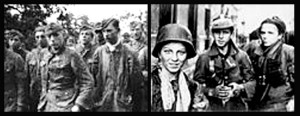 Left: German boy soldiers of the Waffen SS, taken prisoner in Normandy
Left: German boy soldiers of the Waffen SS, taken prisoner in Normandy
Right: Polish Szare Szeregi fighters during the Warsaw Uprising, 1944.
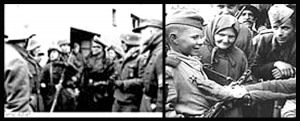 Left: Members of a Hitlerjugend company of the Volkssturm at the German-Soviet front in Pyritz, Pomerania, February 1945.
Left: Members of a Hitlerjugend company of the Volkssturm at the German-Soviet front in Pyritz, Pomerania, February 1945.
Right: Child soldier in the Soviet Union, 1944. “Sons of the regiment” were orphans adopted by Soviet regiments. They lived with the soldiers and some performed reconnaissance.[104]
Vietnam, Cambodia and Laos
Main article: Indochina Wars
In the most notorious case, the Khmer Rouge communist group exploited thousands of desensitized conscripted children to commit mass murders and other inhuman acts during the Cambodian genocide. The brainwashed child soldiers were taught to follow any order without hesitation.[105]
Sierra Leone
Thousands of children were recruited and used by all sides during Sierra Leone’s conflict (1991–2002), including the Revolutionary United Front (RUF), the Armed Forces Revolutionary Council (AFRC), and the pro-government Civil Defense Forces (CDF). Children were often forcibly recruited, given drugs and used to commit atrocities. Thousands of girls were also recruited as soldiers and often subjected to sexual exploitation. Many of the children were survivors of village attacks, while others were found abandoned. They were used for patrol purposes, attacking villages, and guarding workers in the diamond fields. In his book A Long Way Gone: Memoirs of a Child Soldier, Ishmael Beah chronicles his life during the conflict in Sierra Leone.
In June 2007, the Special Court for Sierra Leone found three accused men from the rebel Armed Forces Revolutionary Council (AFRC) guilty of war crimes, crimes against humanity, and other serious violations of international humanitarian law, including the recruitment of children under the age of 15 years into the armed forces. With this, the Special Court became the first-ever UN backed tribunal to deliver a guilty verdict for the military conscription of children.[106] The issue is also discussed thoroughly in the Bones episode, “The Survivor In The Soap“.
Uganda
Originally created to protect Northern Ugandans from the 1986 military coup by the People’s National Resistance Army, Joseph Kony began the LRA – Lord’s Resistance Army in 1987. Stating that he “received messages from God” Kony began attacking his own people – the Acholi – to establish a new theocratic government in Uganda based on the principles of the “Ten Commandments of God.” This attempt by the LRA to gain control of the Ugandan government via roaming armies has used boy as well as girl-children as soldiers,[107] such as Grace Akallo.[108] The LRA expansion into South Sudan, Central African Republic and the DRC – Democratic Republic of Congo has armies with children active in efforts to destabilize the regions by the displacement of civilians through abduction and extreme violence. A 21 October 2008 appeal by the UN Security Council, was made asking for the LRA to cease all military actions humanitarian violations in the DRC immediately.[109] On 14 June 2002 Uganda deposited its instrument of ratification of the Rome Statute, and on 16 December 2003 the Government of Uganda referred the situation concerning Northern Uganda to the Prosecutor of the International Criminal Court (ICC).[110] The ICC investigated the situation,[111] and on 14 October 2005, issued indictments against Lord’s Resistance Army leader Joseph Kony, and four other commanders, (Vincent Otti, Raska Lukwiya (indictment terminated, deceased), Okot Odhiambo and Dominic Ongwen) for war crimes. The warrant for Kony, Otti and Odhiambo includes the alleged crime of forced enlisting of children (Rome Statute Art. 8(2) (e)(vii)).[112][113]
The National Resistance Army also made use of child soldiers.[114]
Reintegration of child soldiers
The reintegration of child soldiers should emphasize three components: family reunification/community network, psychological support, and education/economic opportunity.[115]:3 Reintegration efforts take a minmum commitment of 3 to 5 years in order for programs to be successfully implemented.[115]:3 Practitioners have also found that the most important reintegration factors were the creation of a normal environment (similar to the environment prior to the child being engaged in combat), a sense of forgiveness on the behalf of the child’s family and community through religious/cultural ceremonies/rituals, and the reunification of the child with its family.[115]:3 Reintegration efforts can become challenging when the child in question has committed war crimes. In situations such as these, it is important that the child’s needs are balanced with a sense of community justice.[115]:3
There are two areas of reintegration, however, that warrant special consideration: female child soldiers and drug use among child soldiers.[115]:4 Female child soldiers may be additionally stigmatized by their family/community for having had sexual relations and/or children out marriage.[115]:3 Similarly, child soldiers under the influence of drugs or who have contracted sexually transmitted diseases require additional programming specific to their unique needs.[115]:3
Family reunification/community network
The first step in the reintegration of child soldiers is family unification – unifying the former child soldier with their family members.[115]:3 Where this is not possible, attempts should be made to place former child soldier in foster families or support should be given to assist the former child soldier with independent living.[115]:3 In Angola, a family reunification project was implements entitled “self-building program”, which supported former child soldiers and their families in the construction of a house.[116]:16
Community networks can also be instrumental in the reunification of former child soldiers with their families and their communities. In Angola, a community-based network called ‘Catechist’ has a partnership with approximately 200 churches in Angola.[116]:16 The Catechist was perceived as being neutral, having a sense of authority, and adherence to international humanitarian law.[116]:16 Given this, the network has the capacity to for outreach, was respected by the community, and was thus able to provide permanent support in the reintegration process.[116]:16
There may be concerns as to whether the family will accept the child after they have been a soldier. In Uganda, this acceptance was achieved through the uses of cleansing ceremonies, which has assisted in the removal of stigmatization that the child is contaminated.[116]:16
Psychological support
Child soldiers, as part of their training, undergo a process of asocialization and consequently, they may be resistant to changing their identity from that of a child soldier.[115]:3 Studies have shown that psychosocial approaches – a psychological process that takes place in the community – are more beneficial than western-driven trauma healing in dealing with the psychological aspects of reintegration.[115]:3 These psychosocial approaches support physical health and activity as well as cognitive, emotional, and moral development.[116]:18 Given this, reintegration programs emphasize the opportunity for former child soldiers to establish trusting, consistent relationships with adults, and emphasize a family-based environment.[115]:3 Traditional rituals and family/community mediation is central to addressing the asocial/aggressive behavior a child soldier may have developed, and helps them recover from stressful experiences.[115]:3
Education/economic opportunity
 Statue of Ma?y Powstaniec (The Little Insurgent) in Warsaw. Honor guard of Polish Boy Scouts.
Statue of Ma?y Powstaniec (The Little Insurgent) in Warsaw. Honor guard of Polish Boy Scouts.
Education and economic opportunities help the former child soldier to establish a new identity for him or herself.[115]:4
Access to education is one of the most requested forms of support in a post-conflict environment; however, it is often dismissed for economic reasons.[116]:18
Access to formal education remains a challenge for a multitude of reasons:[115]:4
- the need to earn an income supersedes the desire for education
- the family cannot afford education
- schools have been destroyed as a result of the conflict, or there is a lack of teachers
- difficulty in obtaining documentation to enroll in educational institutions.
- child soldier feel shame for their action and/or there is resentment between the former child soldiers and their classmates.
It is important to strike a balance between education and economic opportunity.[115]:4 Key aspects of striking this balance include:[116]:18
- creation of accelerated formal education program and alternative education models that suit the needs of the former child soldiers
- focusing education on approaches that can generate income, such as market-appropriate vocational training
inclusion of child soldier reintegration in the post-conflict economic policy of the country in question
For more information please visit the following link:
https://en.wikipedia.org/wiki/Military_use_of_children
The following information from CHILD SOLDIERS website, the link is: https://www.warchild.org.uk/issues/child-soldiers?gclid=CJf3m9rS4MMCFShn7AodYnwAEA
Child soldiers
Child soldier. Some words don’t belong together.
It’s bad enough that children’s lives are torn apart by wars they didn’t start. But when they’re forced into fighting in the conflict themselves, it causes psychological and physical damage that can often never be repaired.
Every child has the right to go to school and to live free from violence. Using kids as soldiers constitutes one of the most horrendous breaches of those rights and it is simply and unequivocally wrong.
There are estimated to be 250,000 child soldiers in the world. 40% of child soldiers are girls
Key facts and statistics about child soldiers
- There are an estimated 250,000 child soldiers in the world today.
- It is estimated that 40% of all child soldiers are girls. They are often used as ‘wives’ (i.e. sex slaves) of the male combatants.
- Many rebel groups use child soldiers to fight the government, but some governments also use child soldiers in armed conflict.
- Not all children take part in active combat. Some are also used as porters, cooks and spies.
- As part of their recruitment, children are sometimes forced to kill or maim a family member – thus breaking the bonds with their community and making it difficult for them to return home.
Where are child soldiers?
Africa has the largest number of child soldiers. Child soldiers are being used in armed conflict in Central African Republic, Chad, Democratic Republic of Congo, Somalia and Sudan.
In June 2013 The UN set a goal to have no child soldiers anywhere in the world by 2016. There are eight Government armies listed for the recruitment and use of children and six of them have already committed to making their armies child-free. In 2012, South Sudan, Myanmar, Somalia and the Democratic Republic of Congo signed action plans with the United Nations. The previous year, Afghanistan and Chad made similar commitments. Discussions initiated with the Governments of Yemen and Sudan are expected to lead to action plans in the near future.
Why use children as soldiers?
Children are used as soldiers because they are easier to condition and brainwash. They don’t eat much food, don’t need paying much and have an underdeveloped sense of danger so are easier to send into the line of fire.
As children make up the majority demographic in many conflict-affected countries, there’s a constant supply of potential recruits. Due to their size and ‘expendability’, children are often sent into battle as scouts or decoys, or sent in the first wave to draw the enemy’s fire.
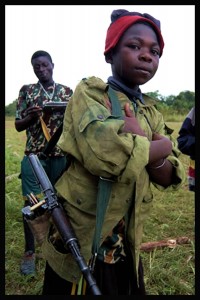 What are the effects on children?
What are the effects on children?
The effects on children are felt long after their physical scars have healed and their drug dependencies overcome. Many child soldiers are desensitised to violence – often at a very formative time in their development and this can psychologically damage them for life.
Even when they’re set free or escape, many children can’t go back home to their families and communities because they’ve been ostracised from them. They may have been forced to kill a family member or neighbour just so they can never go back. Many girls have babies from their time in the rebel groups and their communities/families don’t accept them home.
Most have missed out on school – sometimes for many years. Without an education they have very little future prospects and sometimes return to the rebel groups as they have simply no other way of feeding themselves.
How do child soldiers get recruited?
- Some are abducted from their homes and forced to become soldiers
(a tactic notoriously used by the Lords Resistance Army.) - A village may be forced to provide a certain number of children as soldiers in exchange for staying safe from attack.
- Some children are volunteered by their parents due to extreme poverty and hunger at home.
- In some rare cases children volunteer to join the fight because of ideological reasons or to avenge the death of their family.
Find out more
‘Louder Than Words’ – Global Report by Child Soldiers International.
What is War Child doing?
We’re helping to get children out of army uniforms and into school ones.
War Child has worked with former child soldiers in Africa for many years. In Uganda and the Democratic Republic of Congo (DRC) we’re currently helping to reintegrate former child soldiers back into society and into education.
Many child soldiers go through formal Demobilisation, Disarmament and Reintegration (DDR) programmes when they are free from the armed groups. These programmes tend to focus on the needs of boys but aren’t always so sensitive to the specific needs of girls. As a result, girls are often a very vulnerable and marginalised group even among children who are already excluded and rejected by society.
That’s why we’re focusing our work on girls who have been used as soldiers or their ‘wives’ in northern Uganda and eastern Congo.
We’re providing vital education, counselling and health services for girls – and helping to tackle the huge stigma associated with being a girl soldier. Whilst boys are considered to be dangerous and violent, girls are often seen as ‘damaged goods’ by their community and family. This is especially true if they have suffered a sexual assault or have given birth to a baby.
Picking up a gun again is often the easiest way of regaining the respect of their community. We’re enroling them into school and helping to reunify them with their families if that’s deemed to be the best solution. Some of the children find it hard to sit still in a classroom after enduring years of violence and constant relocation in the bush, so we’re also providing vocational and skills for independent living where appropriate.
You might also like:
The Lord’s Resistance Army (LRA)
Read more about Joseph Kony’s infamous rebel group that has terrorised east Africa.
For more information please visit CHILD SOLDIERS website, the link is:
https://www.warchild.org.uk/issues/child-soldiers?gclid=CJf3m9rS4MMCFShn7AodYnwAEA
The following information from Louder than words website, the link is: https://child-soldiers.org/global_report_reader.php?id=562/
Louder than words
Louder than words: An agenda for action to end state use of child soldiers
The report “Louder than words: An agenda for action to end state use of child soldiers” is published to mark the tenth anniversary year of the entry into force of the Optional Protocol to the Convention on the Rights of the Child on the involvement of children in armed conflict. It examines the record of states in protecting children from use in hostilities by their own forces and by state-allied armed groups. It finds that, while governments’ commitment to ending child soldier use is high, the gap between commitment and practice remains wide. Research for the report shows that child soldiers have been used in armed conflicts by 20 states since 2010, and that children are at risk of military use in many more.
The report argues that ending child soldier use by states is within reach but that achieving it requires improved analysis of “risk factors”, and greater investment in reducing these risks, before the military use of girls and boys becomes a fact. Real prevention means tackling risk where it begins – with the recruitment of under-18s. A global ban on the military recruitment of any person below the age of 18 years – long overdue – must be at the heart of prevention strategies, but to be meaningful it must be backed by enforcement measures that are applied to national armies and armed groups supported by states.
The report contains detailed analysis of the laws, policies and practices of over 100 “conflict” and “non-conflict” states providing examples of good practice and showing where flaws in protection put children at risk. It also shows how states can do more to end child soldier use globally via policies and practices on arms transfers and military assistance, and in the design of security sector reform programs. On the basis of this analysis a “10-Point Checklist” is included to assist states and other stakeholders in assessing risk and identifying the legal and practical measures needed to end child soldier use by government forces and state-allied armed groups.
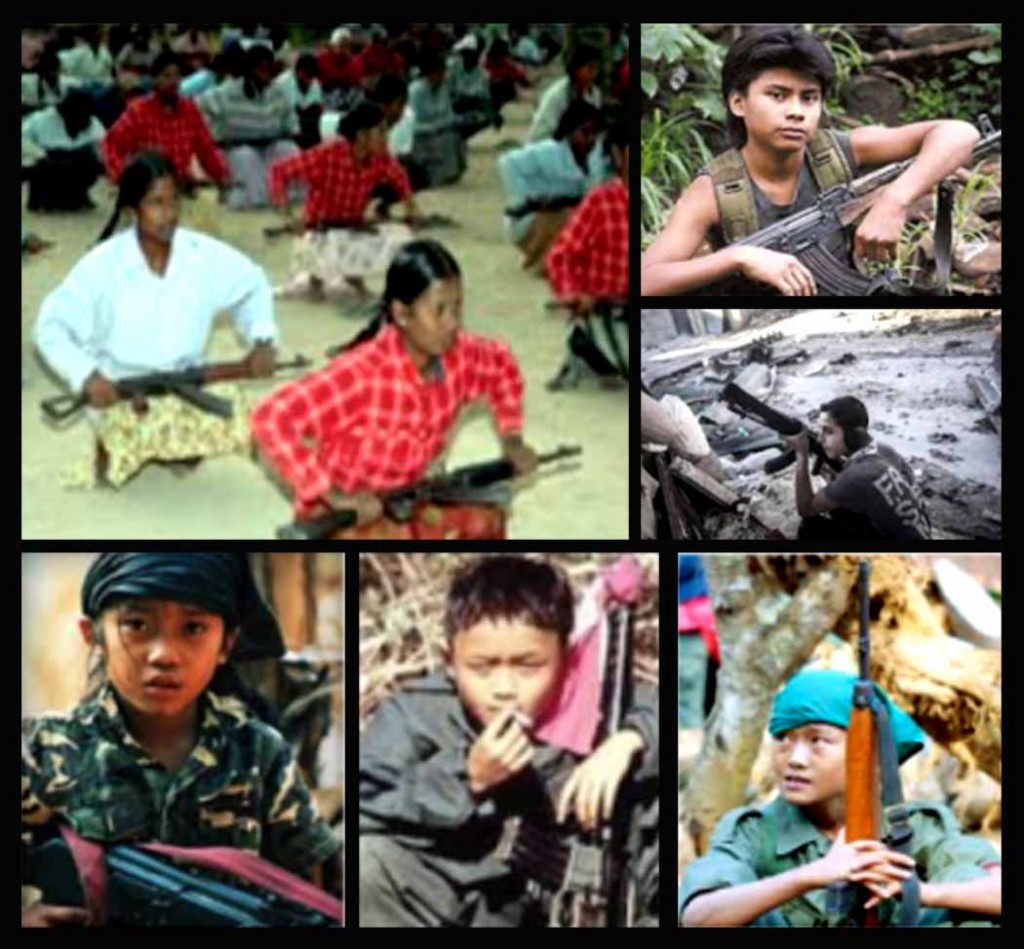
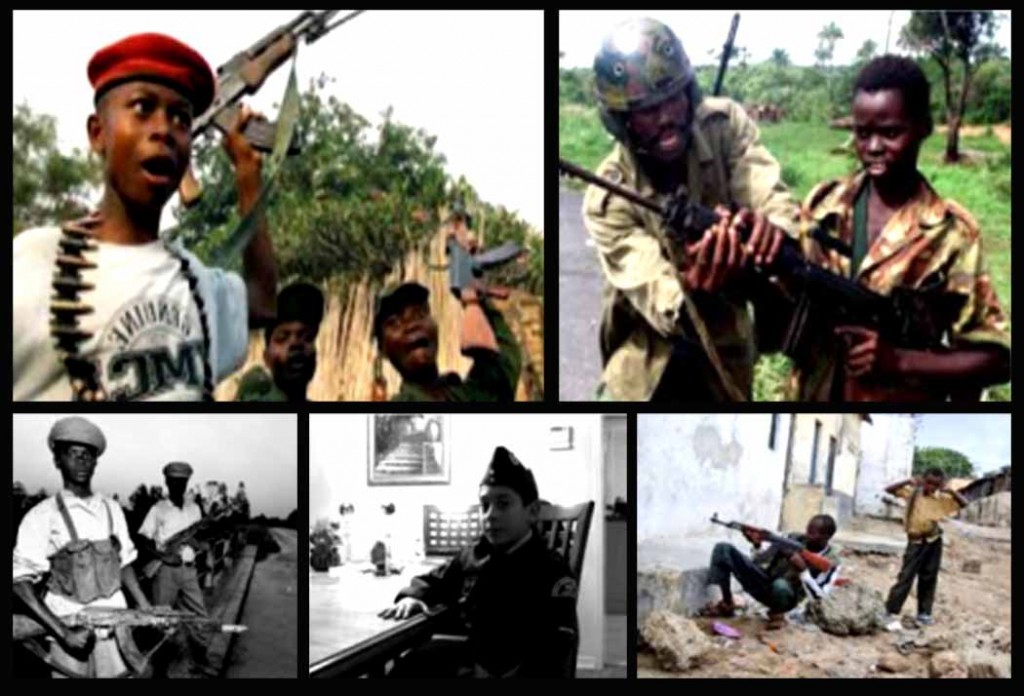

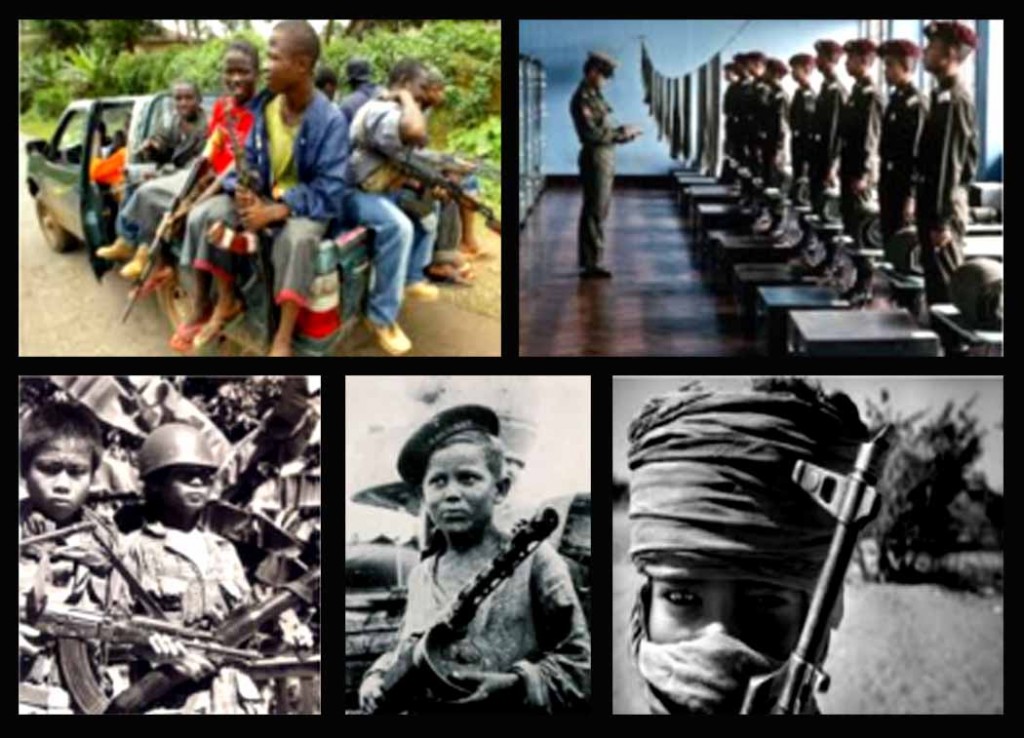 The following information from Human Rights Watch website, the link is: https://www.hrw.org/topic/childrens-rights/child-soldiers
The following information from Human Rights Watch website, the link is: https://www.hrw.org/topic/childrens-rights/child-soldiers
- Thousands of children are serving as soldiers in armed conflicts around the world. These boys and girls, some as as young as 8-years-old, serve in government forces and armed opposition groups. They may fight on the front lines, participate in suicide missions, and act as spies, messengers, or lookouts. Girls may be forced into sexual slavery. Many are abducted or recruited by force, while others join out of desperation, believing that armed groups offer their best chance for survival. We are working to prevent the use of child soldiers and to hold accountable the people who send children to fight.
A 14-year-old fighter in a Free Syrian Army brigade takes position inside a house in Deir al-Zor, a city in eastern Syria, in July 2013.
© 2013 REUTERS/Khalil Ashawi
Syria: Armed Groups Send Children into Battle
Non-state armed groups in Syria have used children as young as 15 to fight in battles, sometimes recruiting them under the guise of offering education, Human Rights Watch said in a report released today. The groups have used children as young as 14 in support roles. Extremist Islamist groups including the Islamic State of Iraq and Sham (ISIS) have specifically recruited children through free schooling campaigns that include weapons training, and have given them dangerous tasks, including suicide bombing missions.
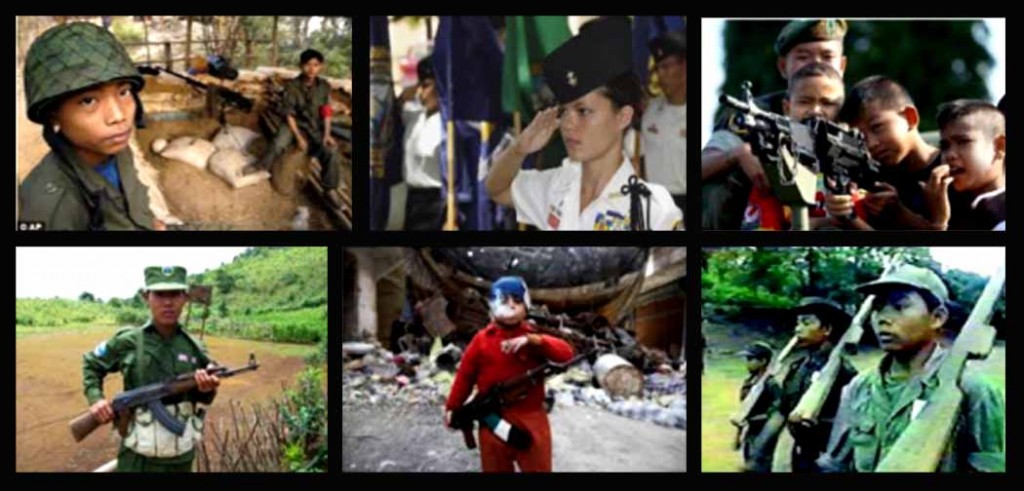
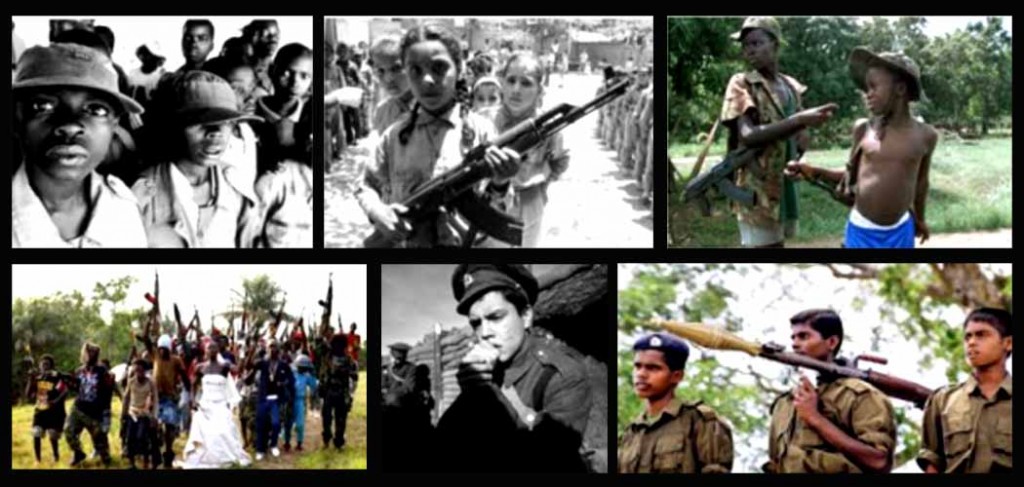
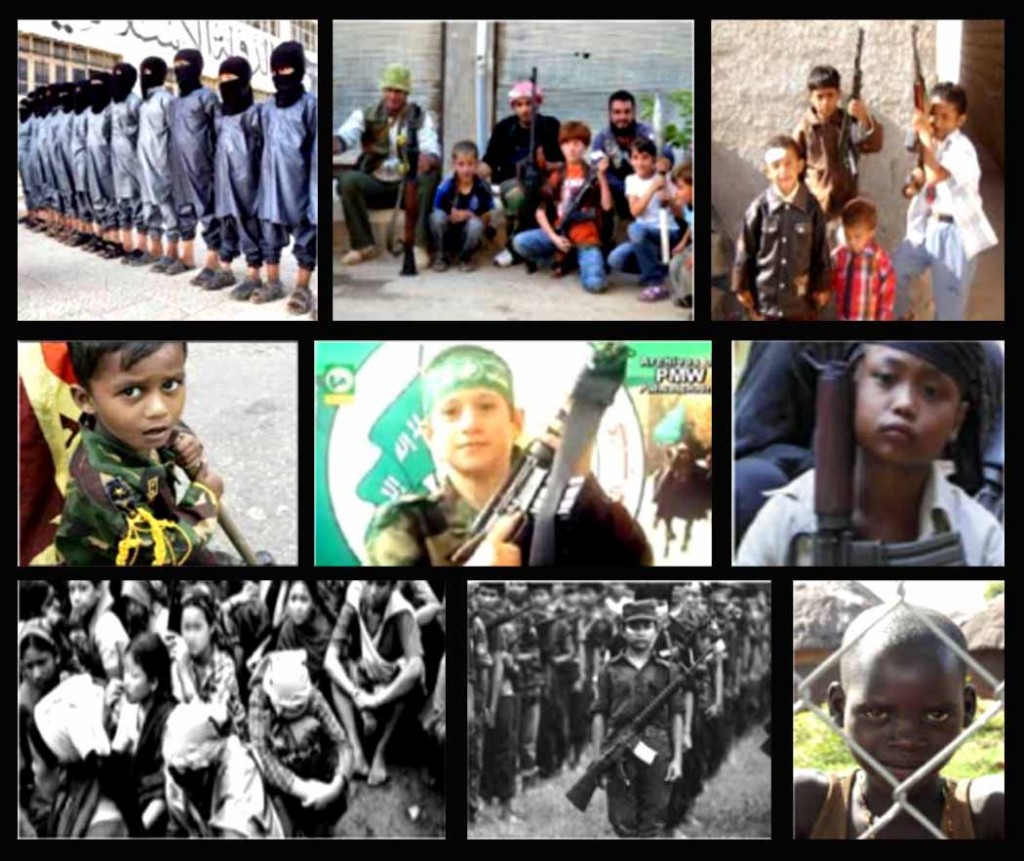
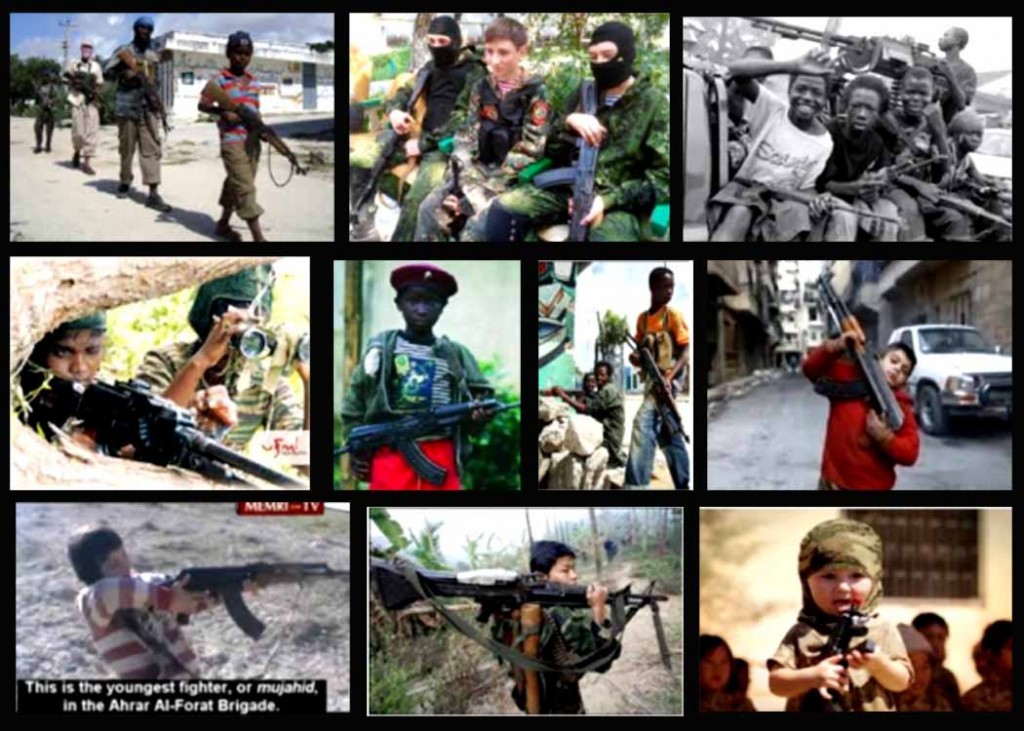 It is so painful to see innocent children get brainwashed to become killers. What is wrong with adults who gave children weapons? These children probably enjoyed wearing soldiers’ uniforms to look good. They may have played with toy guns before they became brainwashed. But now they can have real guns, which may seem like more fun.
It is so painful to see innocent children get brainwashed to become killers. What is wrong with adults who gave children weapons? These children probably enjoyed wearing soldiers’ uniforms to look good. They may have played with toy guns before they became brainwashed. But now they can have real guns, which may seem like more fun.
Adults who brainwash the children tell them that if they kill the enemy they will go to heaven and become heroes.
“Hey, try cigarettes you will look cool.” “How about taking these pills, you will feel better.” The brain-washers give drugs and cigarettes to children to become addicts of these harmful substances. This will make children do anything that the brain-washers tell them to do, even kill themselves.
After spending all this time painfully doing this project I have more questions than answers.
I WONDER:
1. I wonder: Where the brain-washers get their weapons, especially the hi-tech weapons? I do not think that the brain-washers make them. I wonder if they can even make knifes as weapons to kill people. These brain-washers have to buy their guns and hi-tech weapons from somewhere.
2. I wonder: Who are the weapons dealers who will sell the weapons around the world to anyone who has money to purchase them?
3. I wonder: Where the brain-washers get large sums of money to buy these weapons? They may get money from selling drugs, ransom money from kidnapping people, stealing or taking over people property and from supporters who donate money to them.
4. I wonder: Who are the supporters that donate money to the brain-washers?
5…I wonder: Finally who are the producers of all these weapons sold in the world market and are these weapon producers in developing and technological advanced countries?
If we analyze the situation of the operation of child soldiers, it is not only the uncivilized brain-washers who are guilty of the crime. There are a great many people in these organizations that are responsible for creating Child Soldiers. Some are in developing countries and others in technologically advanced countries that produce the weapons for sale. These weapon producing countries are consciously or subconsciously participating in an unforgivable and inhumane act of creating Child Soldiers. These weapons producing countries will receive profits from illegal money that brain-washers acquire and spent to buy weapons.
Ing-On Vibulbhan-Watts, Monday, February 23, 2015
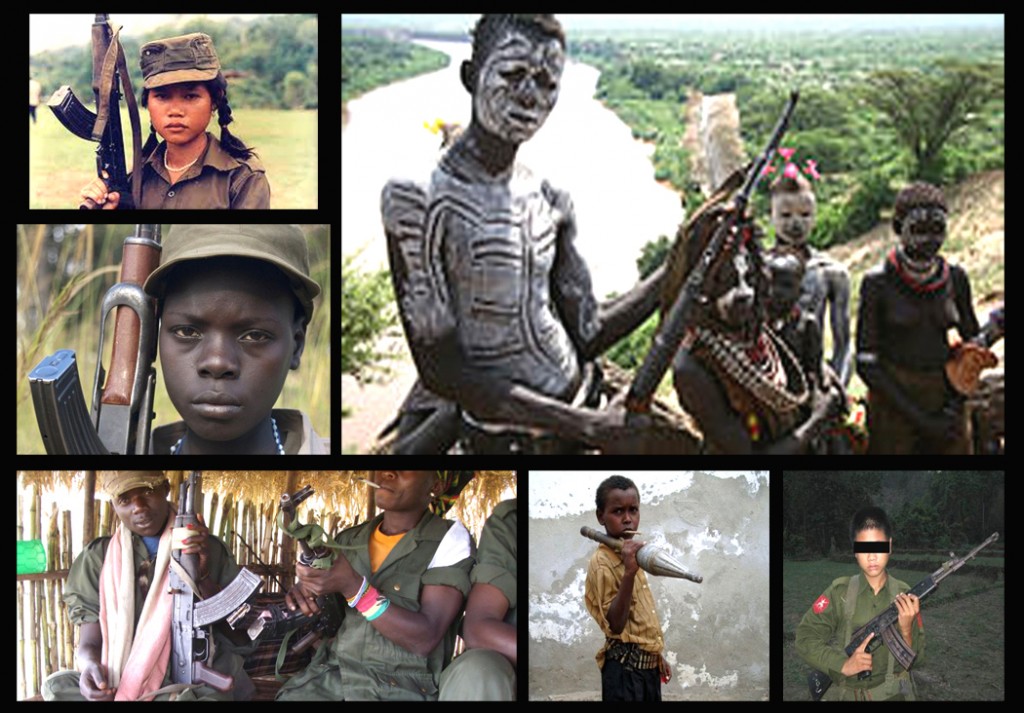
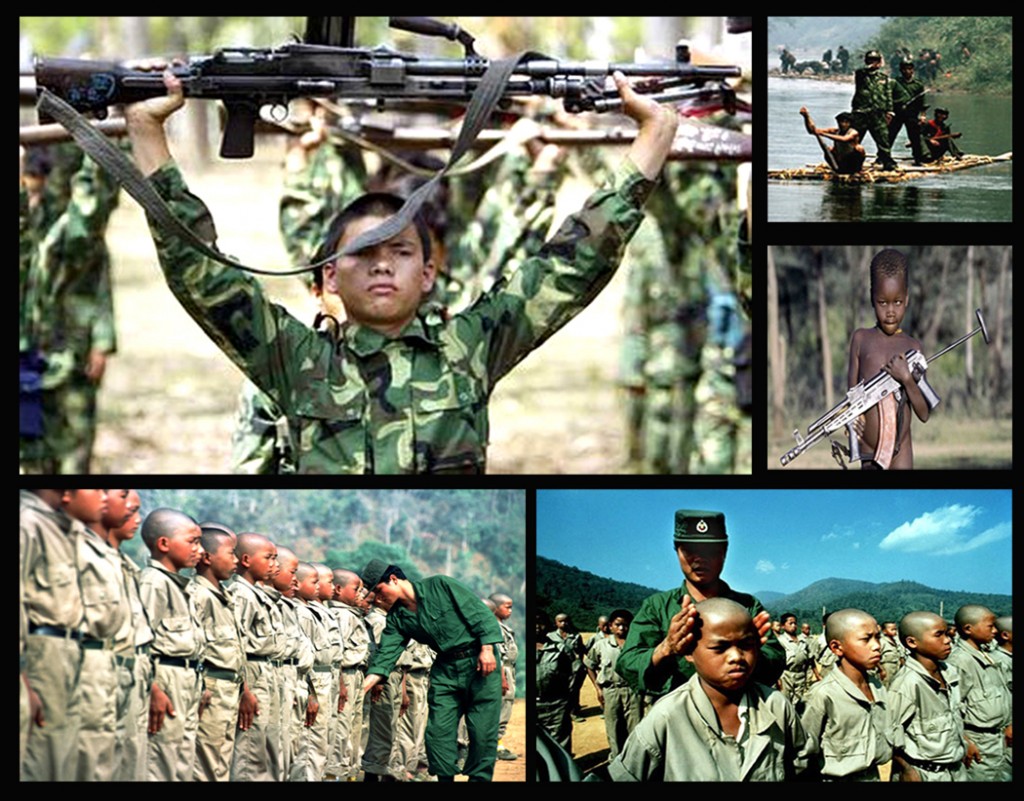
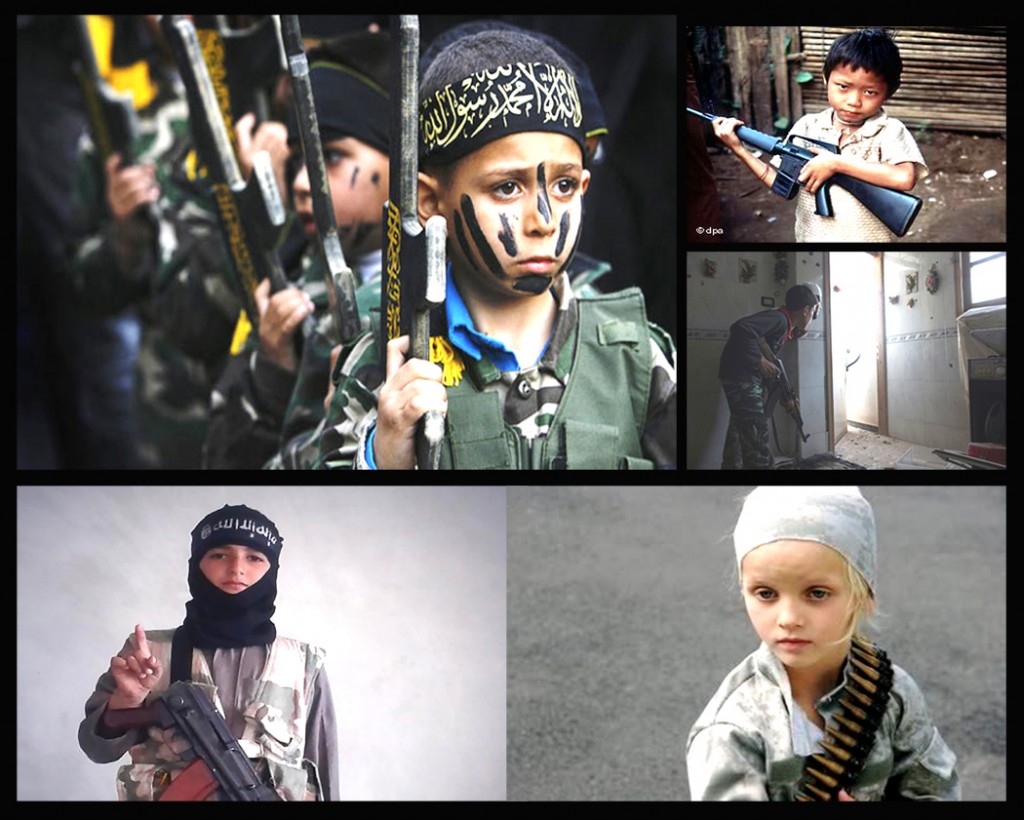
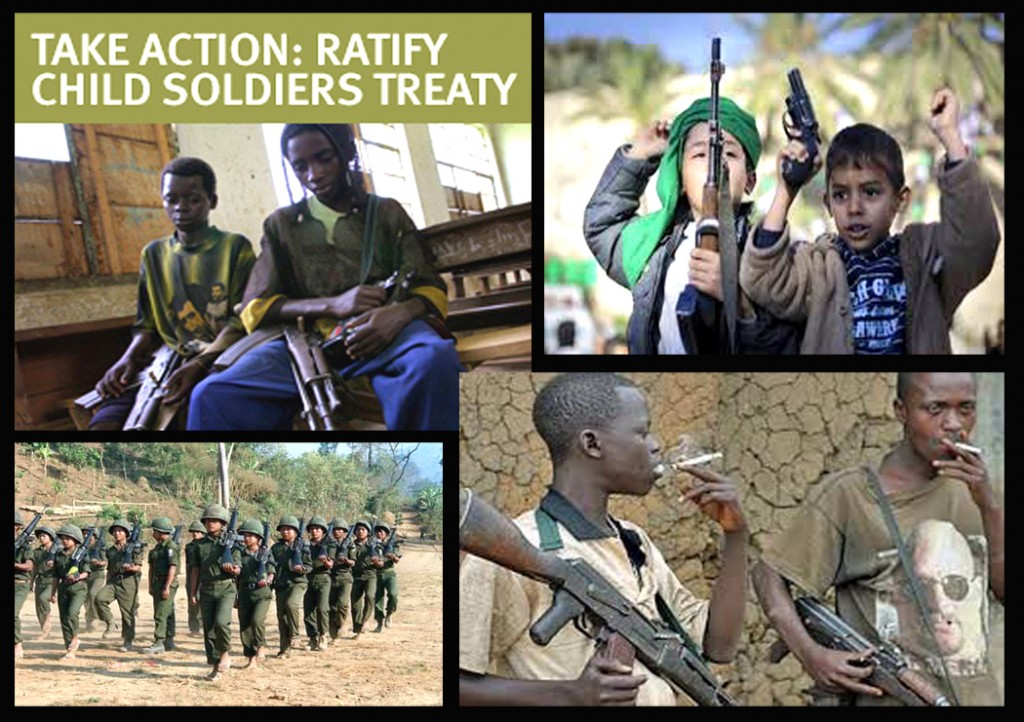
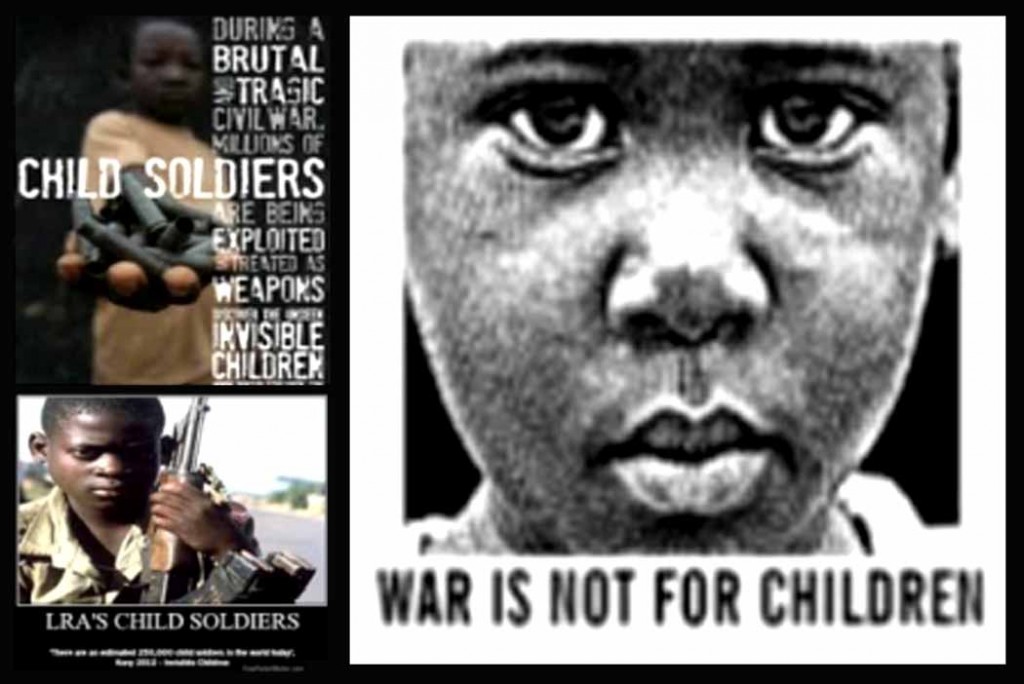


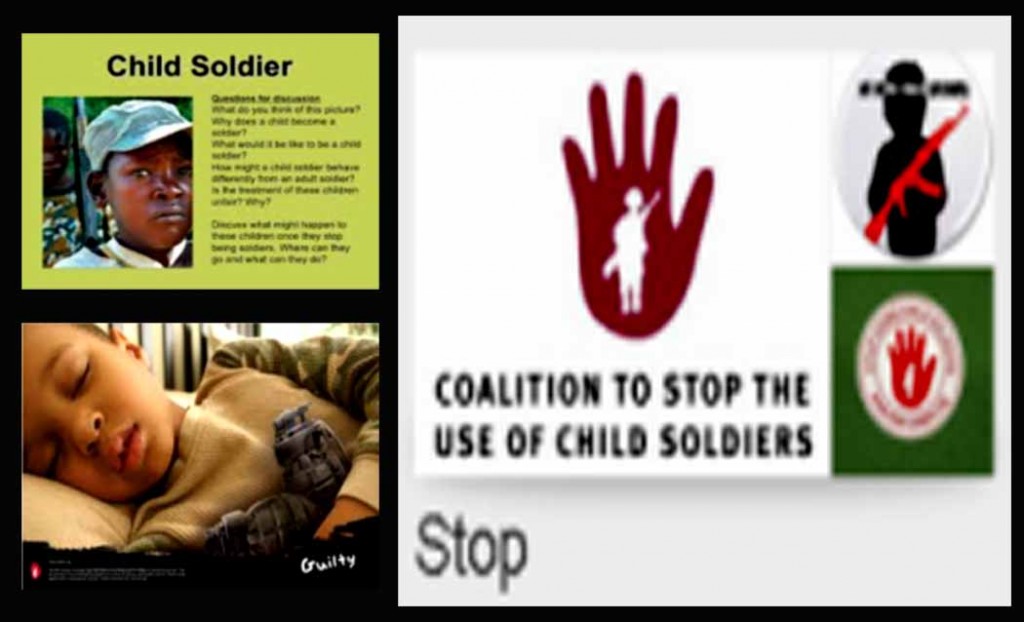
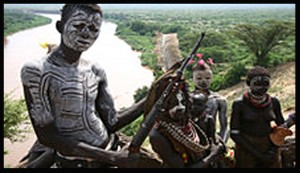

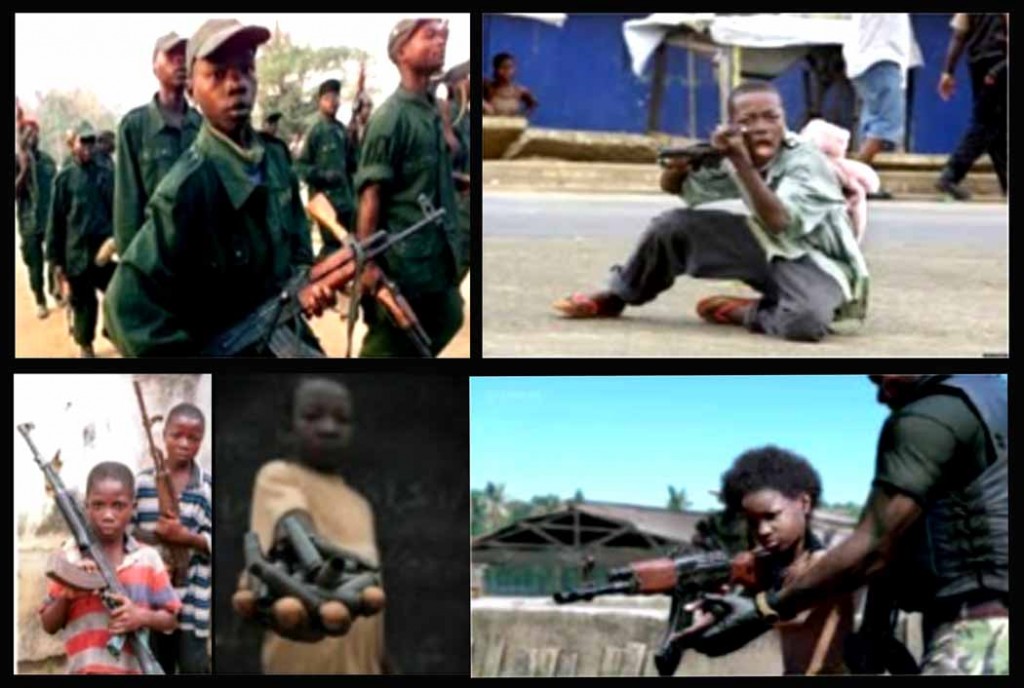
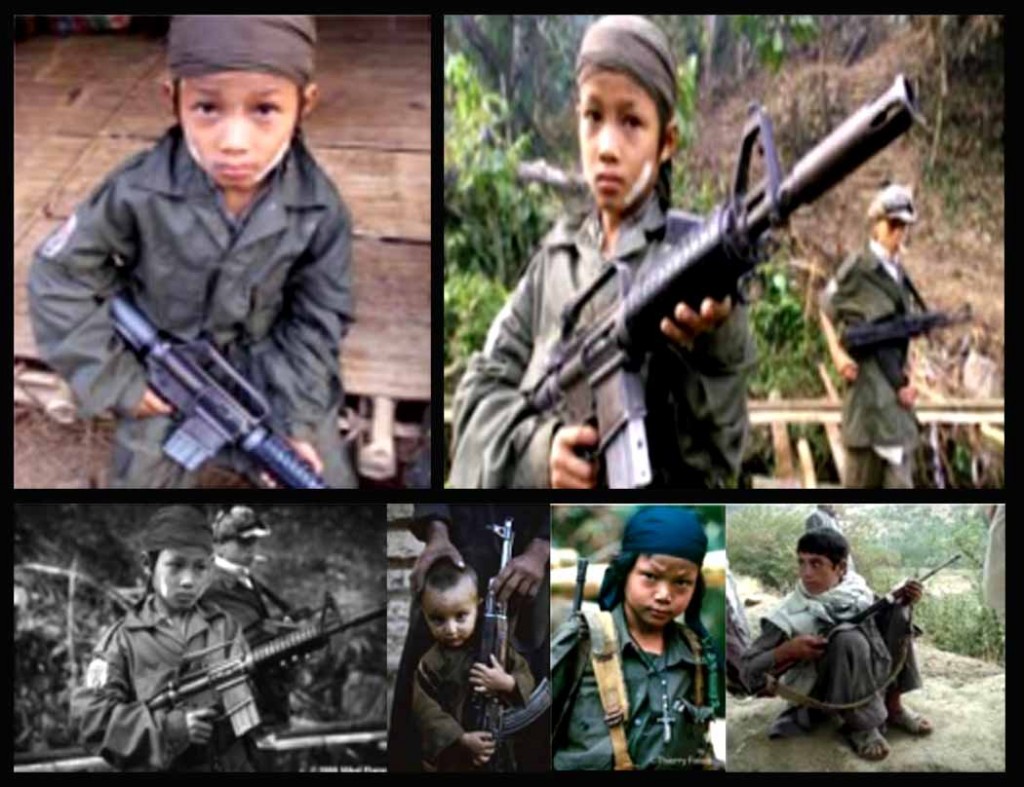
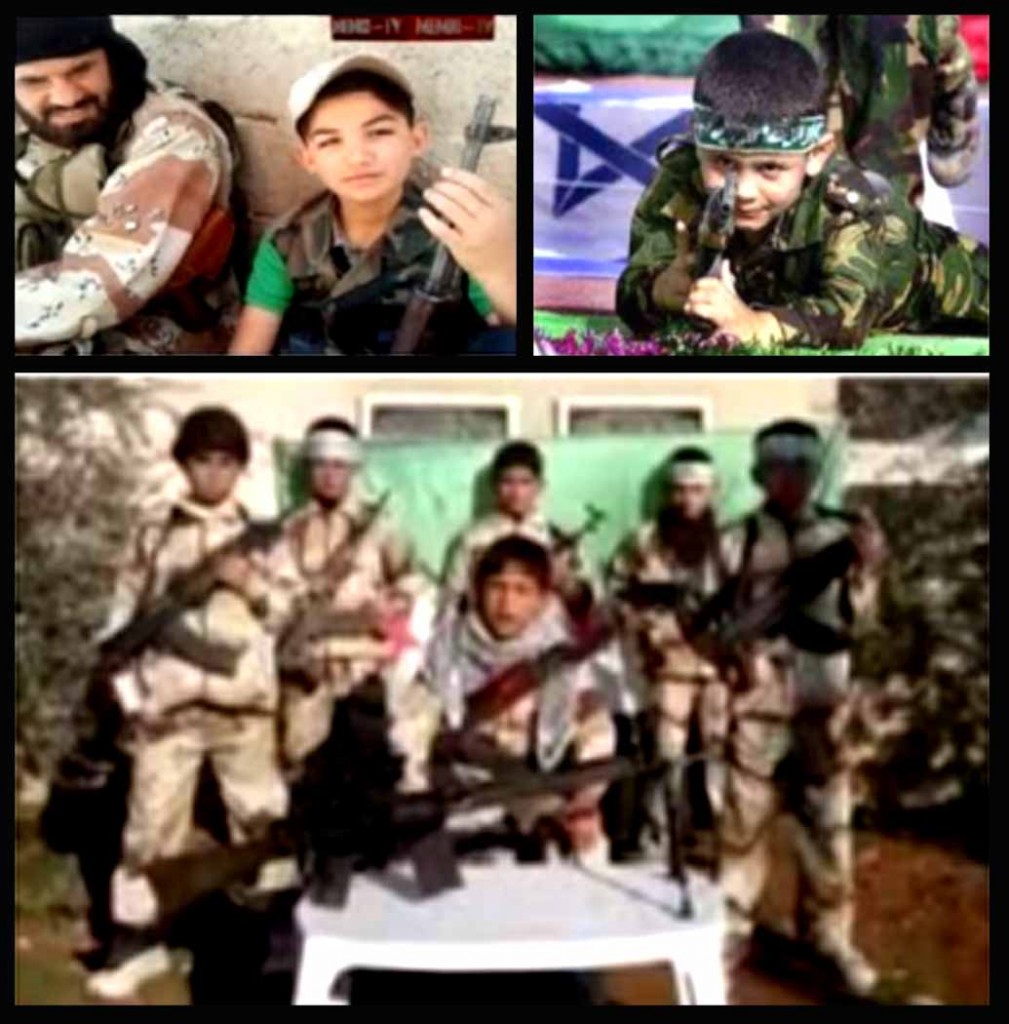
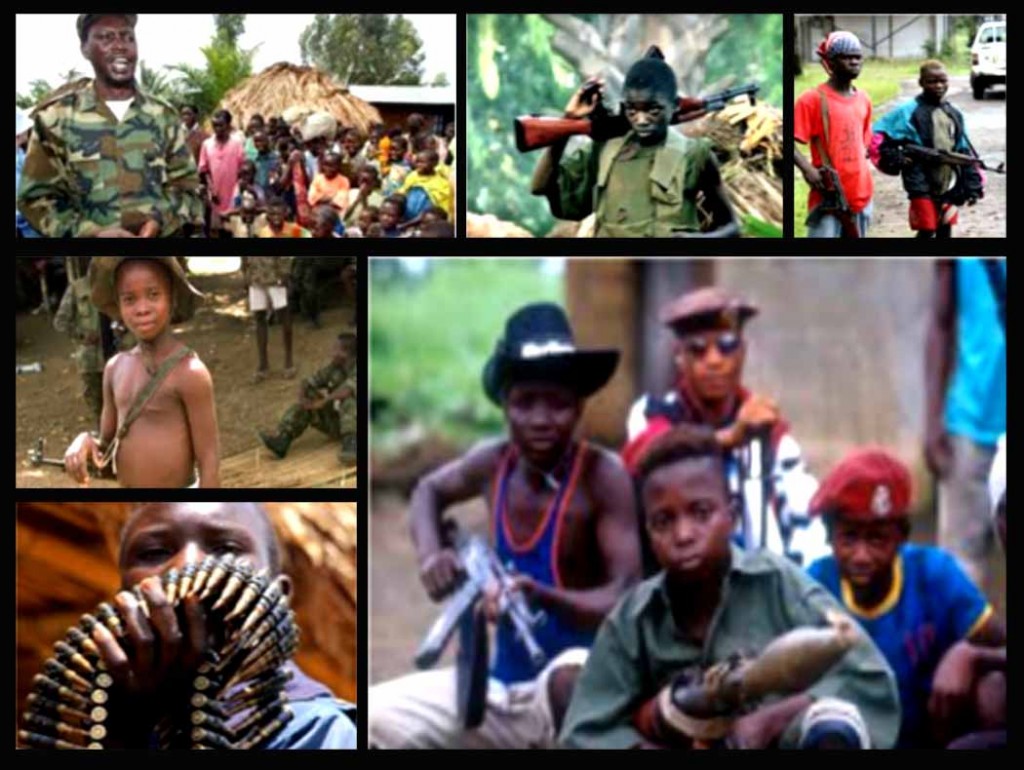

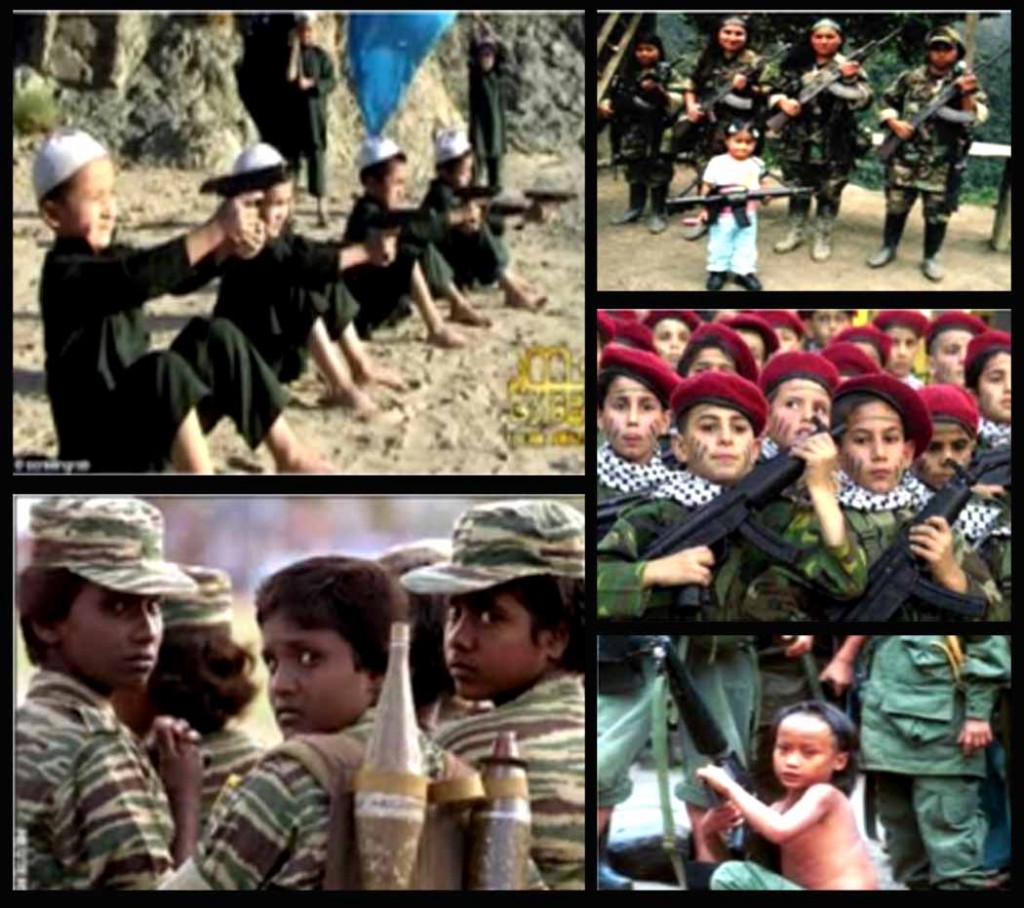
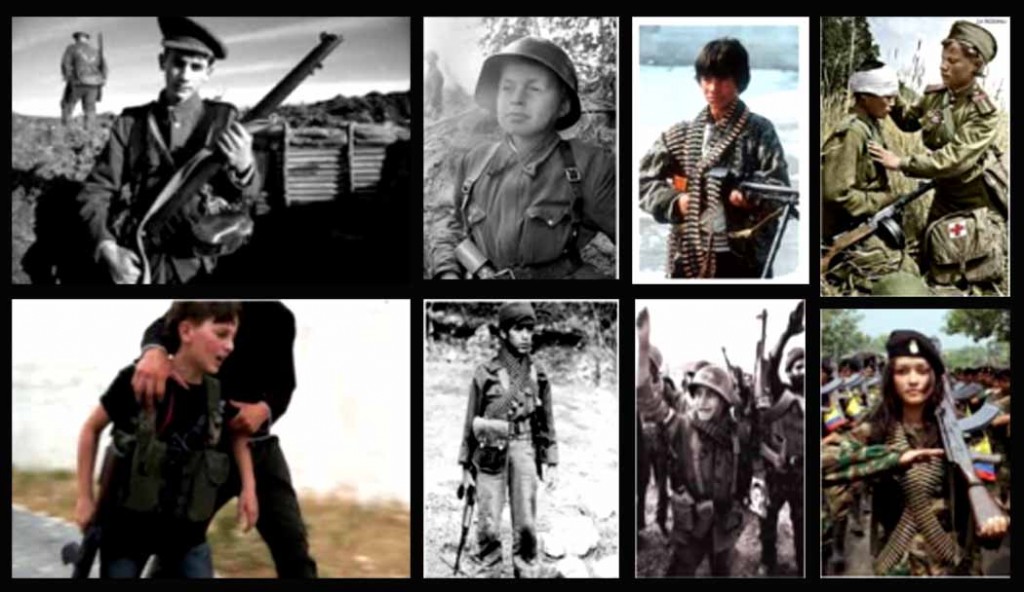
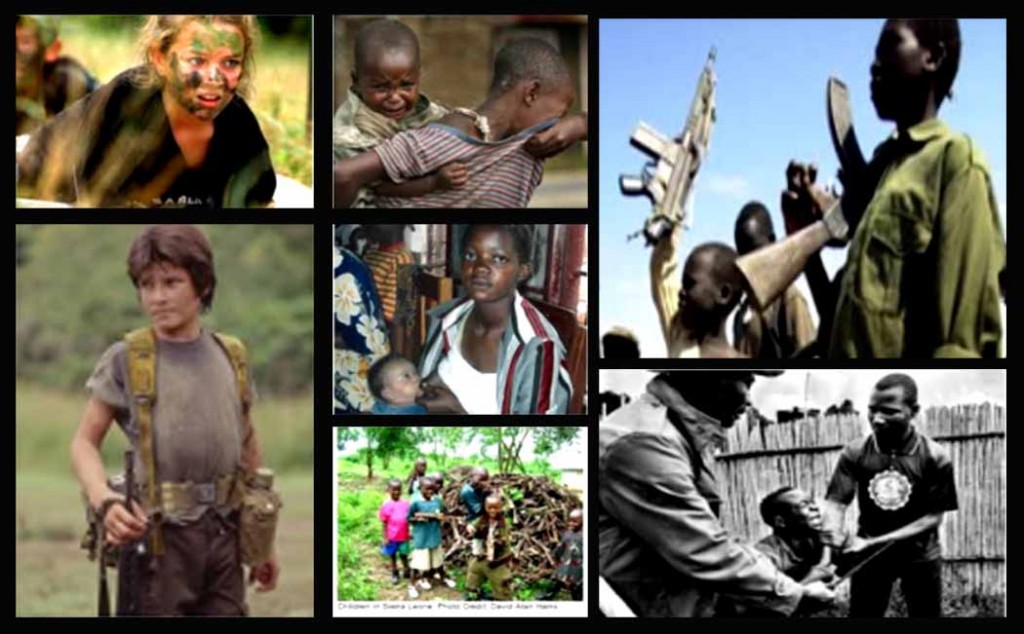
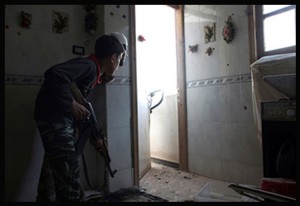
Leave a Reply